Last updated on March 14, 2024
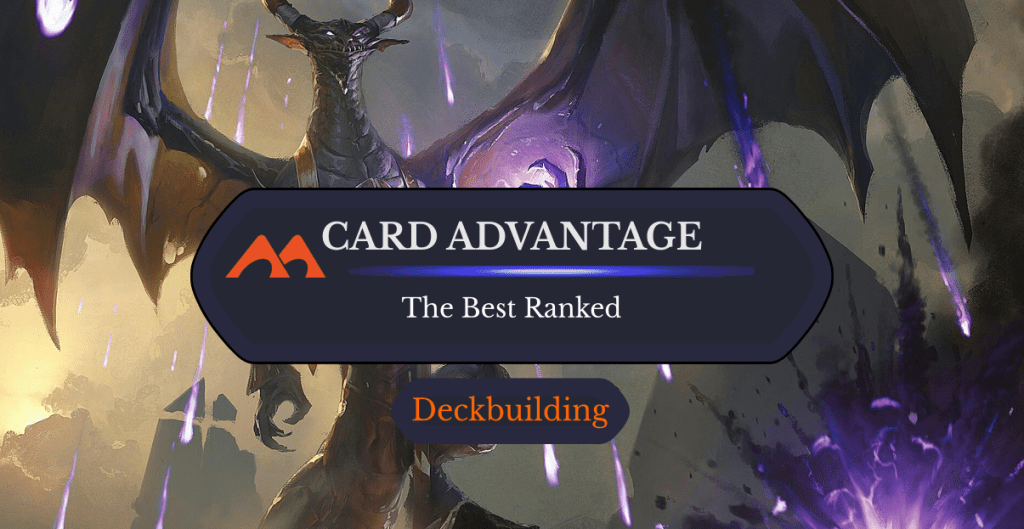
Torment of Hailfire | Illustration by Grzegorz Rutkowski
Magic, like most other card games, has pillars of strategy and gameplay that often determine who wins a given game. Things like value, tempo, interaction, bluffing, and card advantage all have serious impacts determined by the players and their choices throughout the game.
Card advantage specifically comes down to deckbuilding and opportunities during a game. I’m sure you’ve heard of card draw before, but that isn’t exactly what card advantage is.
What is card advantage, and why is it important? How can you gain card advantage? Which cards are the most card advantageous? Let's find out!
What Is Card Advantage?

Brainstorm | Illustration by Daarken
Card advantage is just getting more cards out than you put in when you use a card, which can happen in a few different ways.
The most common are card draw spells that draw more than a single card, like Divination. This sorcery is card advantageous because you’re spending one card to draw two, effectively having one more card in your hand than when you started.
This is an interesting way of looking at the game, and it’s something that’s present and important in just about every card game. Card advantage doesn’t always necessarily need to account for the mana spent or other factors because it's measured on a card-for-card scale.
Card draw’s advantageous effect can also be mimicked by cards that don’t even draw cards in the first place. If you cast Snapcaster Mage to flashback and cast a spell from your graveyard then the Mage supplies you with a creature on top of whatever other card you get to cast again. That’s effectively the same as drawing another card and casting it right away.
Another way to generate card advantage doesn’t even involve drawing cards or casting spells a second time. If your opponent played three straight creatures while you only played one, a board wipe like Wrath of God would be card advantageous because you’re spending two cards in this transaction: your creature (assuming it’s a card you played and not a token) and Wrath of God. Meanwhile your opponent spent and lost three creatures in this exchange.
The idea of card advantage is the entire premise that control decks are built on. They win by using cards to get two-for-ones and draw surplus cards to burry an opponent in card advantage. The opposite effect appears in aggressive decks. They instead willingly take one-for-ones and are often forced to take a one-for-none while banking on overwhelming opponents with speed instead of strength or value.
There's also card advantage in cards that give seemingly one-for-one outcomes. Take Thoughtseize for example. This card is used to take away a card from an opponent’s hand. While that transaction adds up to one card for one card, you casting Thoughtseize also gets information on the cards in your opponent’s hand. Cards in hand lose strength when they become known, making these types of spells card advantageous.
Honorable Mentions: Timetwister & Ancestral Recall
As members of the Power Nine – the strongest Magic spells ever printed (think of The Avengers, but for MTG cards) – Timetwister and Ancestral Recall are so powerful that they're off the charts. Nothing comes close, to the point that Ancestral Recall is among the most restricted cards in MTG: It's banned everywhere save Vintage, and in that format you can play just a single copy.
They are of course as good as card advantage gets, but it would be an insult to them to even try to rank them among cards outside this elite group.
#45. The Triomes
Triomes are 3-colored lands; they enter the battlefield tapped and each of them has three basic land types. And, for the purpose of this ranking, they also have a cycling ability: you can pay and discard them to draw a card.
This is not card advantage in the strict sense of the term: You end up with the same amount of cards in hand after cycling, not more. But the triomes' cycling ability highlights the importance of quality, not just quantity. In the late game, when you have lots of mana but few ways to spend it, getting rid of a land you don't need in order to draw a useful spell is, in practice, card advantage.
Of course, cycling alone would not suffice to make the cut. But the triomes being nearly mandatory in the mana base of any 3+ color deck, plus their capacity to swap themselves from your hand when they're no longer necessary for something useful instead, earns them a mention here even if the grand total number of cards you get is the same.
#44. Sun Titan
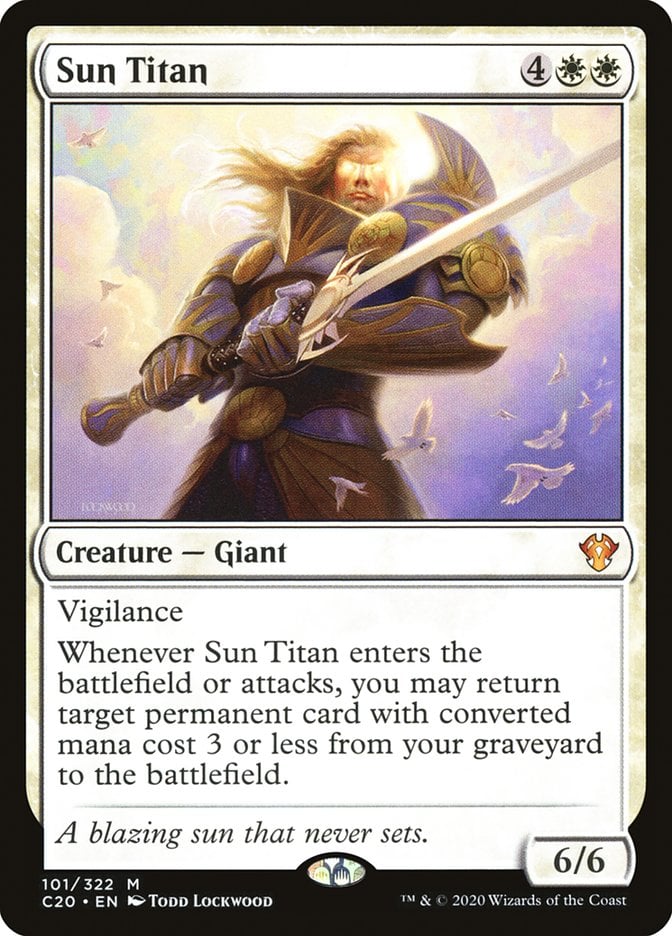
Sun Titan, who is a titan by name but a giant by creature type, is a good example of a spell that provides card advantage without actually drawing you a card.
It's a big body that returns from the graveyard a cheap permanent (any permanent, not just a creature), and if our foe doesn't want our Sun Titan to keep generating value every turn, they'll have to spend at least a card dealing with it ASAP.
#43. Uro, Titan of Nature’s Wrath
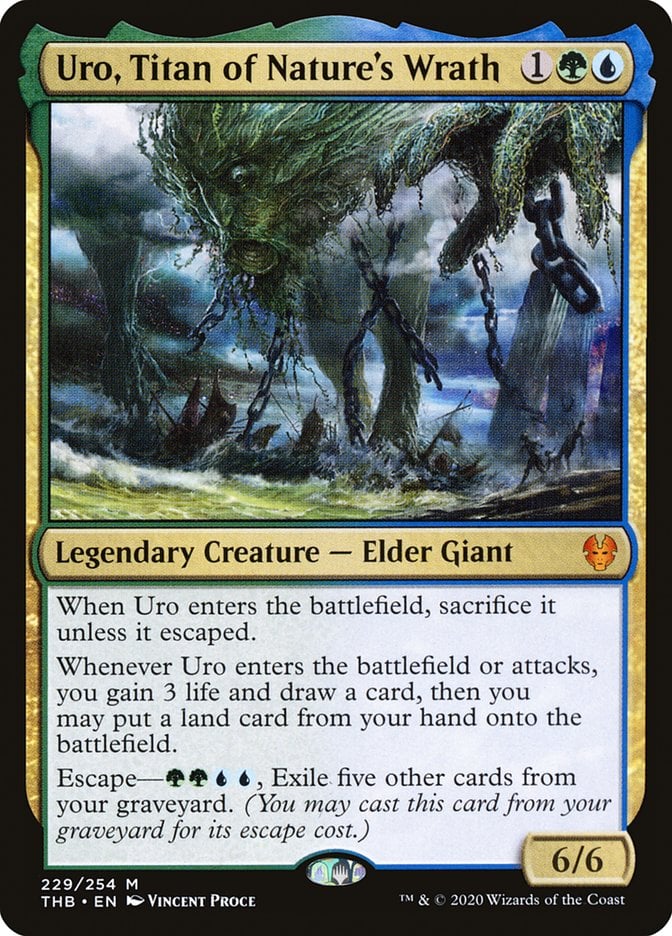
Uro, Titan of Nature's Wrath is about as good as it gets. It draws multiple cards over the course of the game, accelerates you on lands, and even gains you some life.
The card draw here is significant. It can be played in just about any deck that needs a long-term win condition, and it supplies just that.
#42. Glimpse of Nature
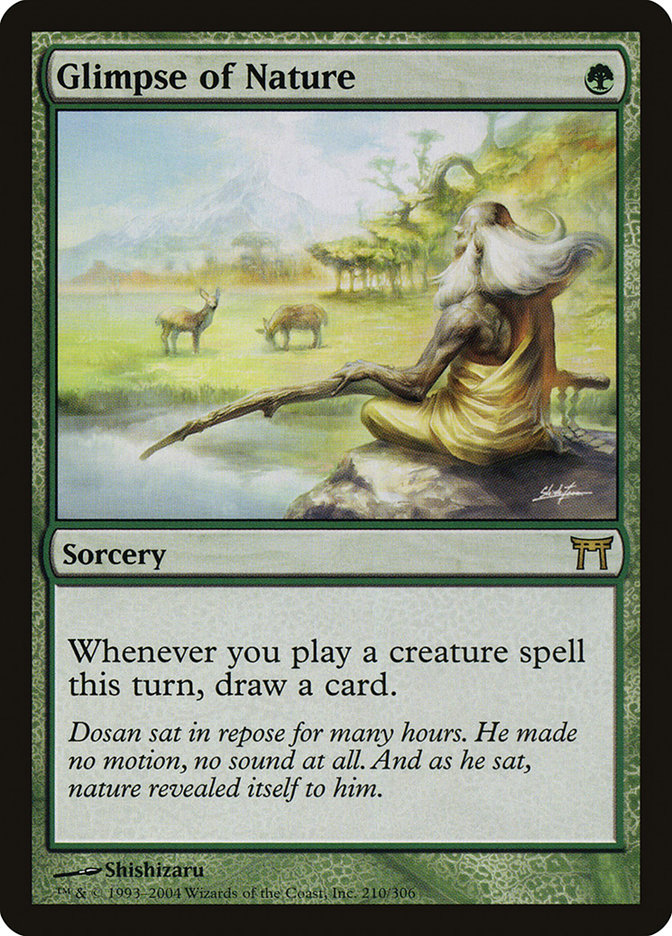
Glimpse of Nature is the greatest card advantage spell there is in the right setting. It’s an incredibly important piece in Legacy elves decks, allowing them to continuously churn through cheap creatures that replace themselves to eventually land on Craterhoof Behemoth as a closer.
#41. Court of Grace
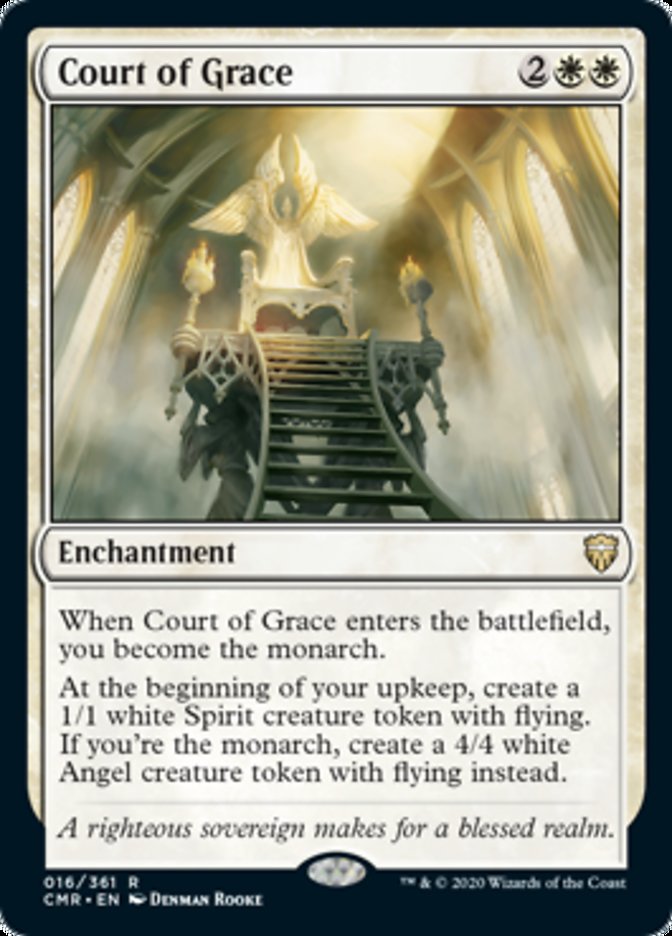
Court of Grace is a great example of enchantment-based card advantage because it brings that advantage through different means. It introduces the monarch, which draws you plenty of cards and replaces itself, but it also creates 1/1 and 4/4 flying tokens.
Those tokens aren’t exactly stable and consistent value like card draw or two-for-ones, but they exert a lot of pressure on the board and contest your opponents’ non-token creature threats that they spent a card on. There are just so many ways to get card advantage with this card that I couldn’t leave it off the list.
#40. Reckoner Bankbuster

Reckoner Bankbuster can offer up to three extra cards while being a decent 4/4 body if it’s crewed.
I loved this card in Standard while it was legal, and it’s even recently made it into some of my casual control Commander decks. It’s just great.
#39. Damnation

Board wipes are the most brutal, ruthless form of card advantage: Your foes spend turns and mana putting several permanents on the board, then we wipe away all that effort and hard work with a single card of ours.
Damnation is probably the best board wipe for black: 4 mana to destroy everything is an excellent rate – exactly the same cost and effect as the grandparent of all wrath effects, Wrath of God.
Damnation has seen a lot fewer reprints than its ancestor, so it costs a lot more when is involved; as of this writing, it's hard to find a copy for less than $15.
#37. Moldervine Reclamation
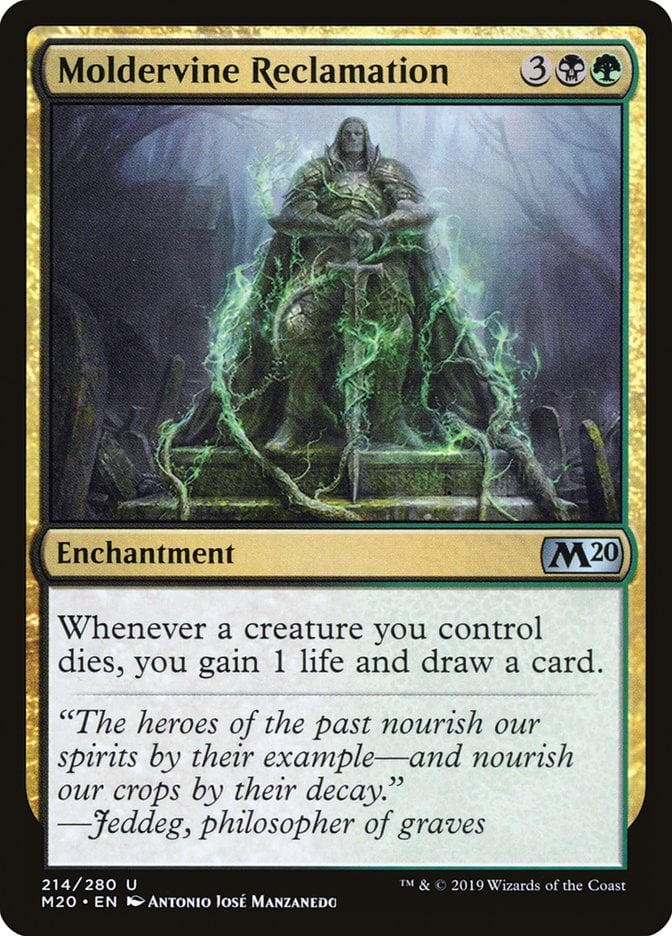
Moldervine Reclamation is a sweet enchantment that's often overlooked in casual Commander decks. It provides a difficult-to-remove card advantage effect for sacrifice decks, which are almost always Golgari ().
The lifegain is a nice touch, but that’s not what you’re here for.
#37. Greater Good
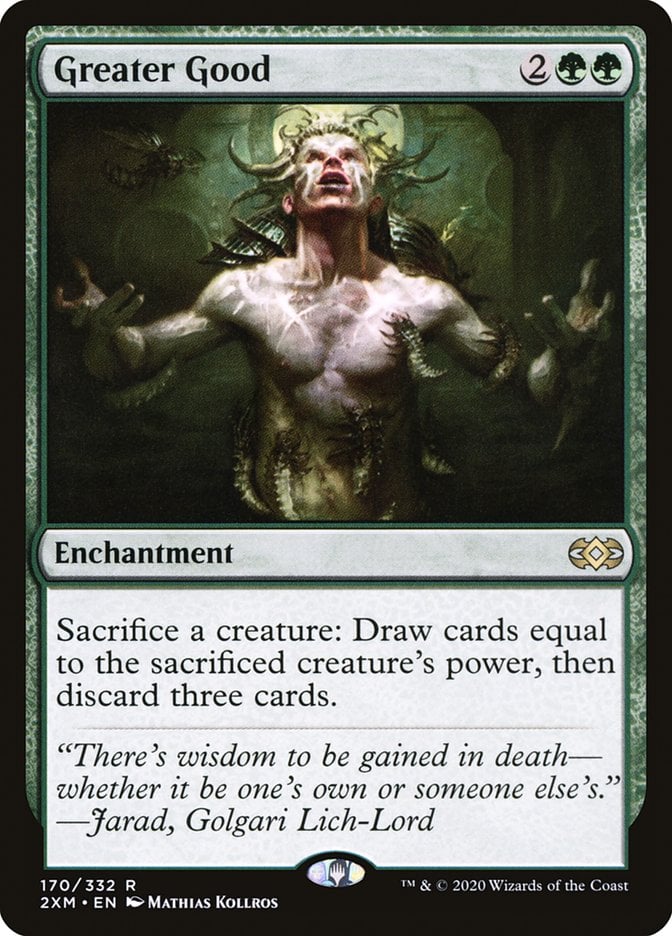
Greater Good is, well, great. This 4-mana enchantment lets you sacrifice a creature at instant speed to draw cards equal to its power. The downside is that you then have to discard three cards, but the kinds of huge creatures you can pitch to this in green often have double that power.
This also helps hedge against removal spells which in turn just furthers the card advantage.
#36. Mystic Forge
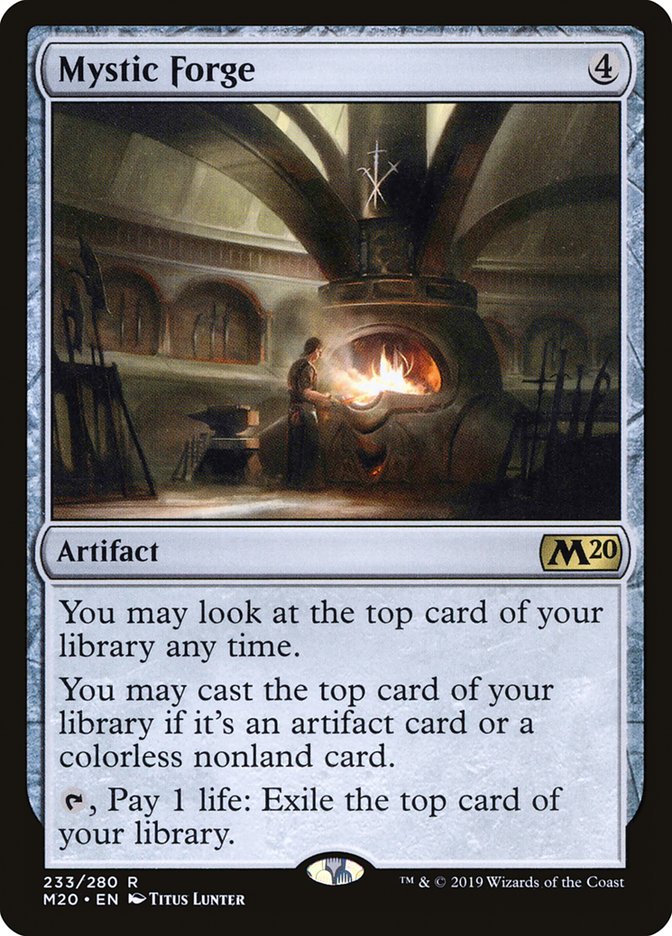
Mystic Forge provides two interesting effects, both tightly tied to card advantage.
The first ability is similar to drawing an extra card, but with a huge upside. If it's not a spell we can (or want to) cast, then this ability is virtually the same as drawing a card and having it sitting in our hand. But if we cast our top spell then it's like drawing two cards (since now we have access to the next card on top of our library), and so forth.
Because of this, Mystic Forge‘s third ability provides both card filtering (by getting rid of cards we don't need) and card advantage: Any time we find a spell we're happy to cast, it's like having drawn an extra card.
This third ability comes in handy in several Commander strategies (filtering cards by paying life is usually a very good deal), but of course Mystic Forge is most valuable in colorless or artifact-focused builds.
#35. Consecrated Sphinx

Consecrated Sphinx is still one of the kings of card advantage. It draws massive numbers of cards, but you also get extra advantage by outdrawing your opponent at every turn.
It doesn’t matter what kind of card draw engine an opponent has in this case because you can always double their output and come out ahead.
#34. Grim Haruspex
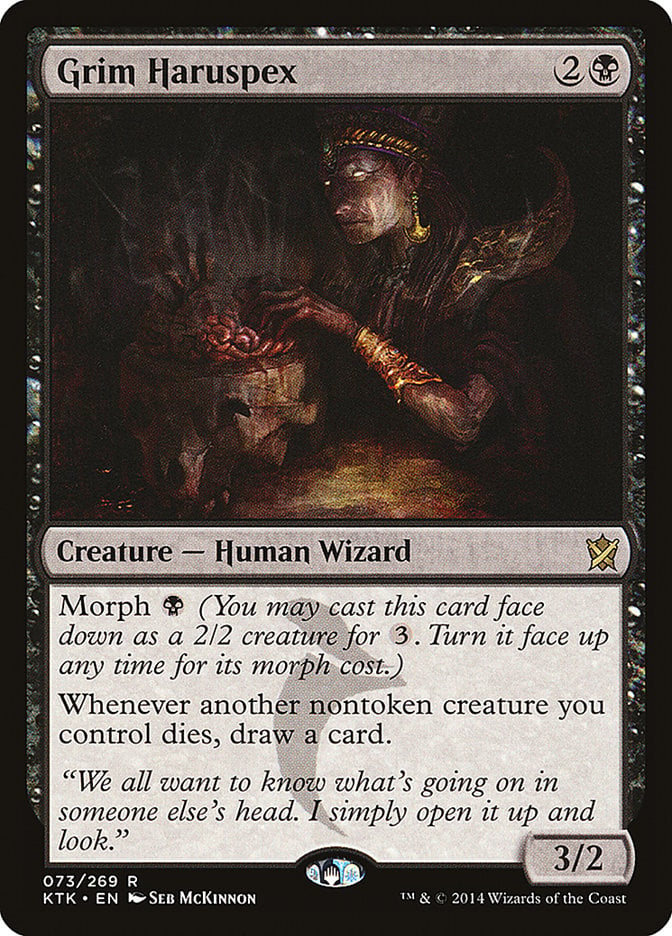
Grim Haruspex is a 3-mana 3/2 that draws you a card whenever a non-token creature you control dies. This plays well into black’s sacrifice themes but also completely negates the potentially card-advantageous aspects of certain removal spells.
Drawing a card when a creature dies is great. It offsets the loss from your previously played card dying and eventually pays for the Haruspex itself.
#33. Necropotence
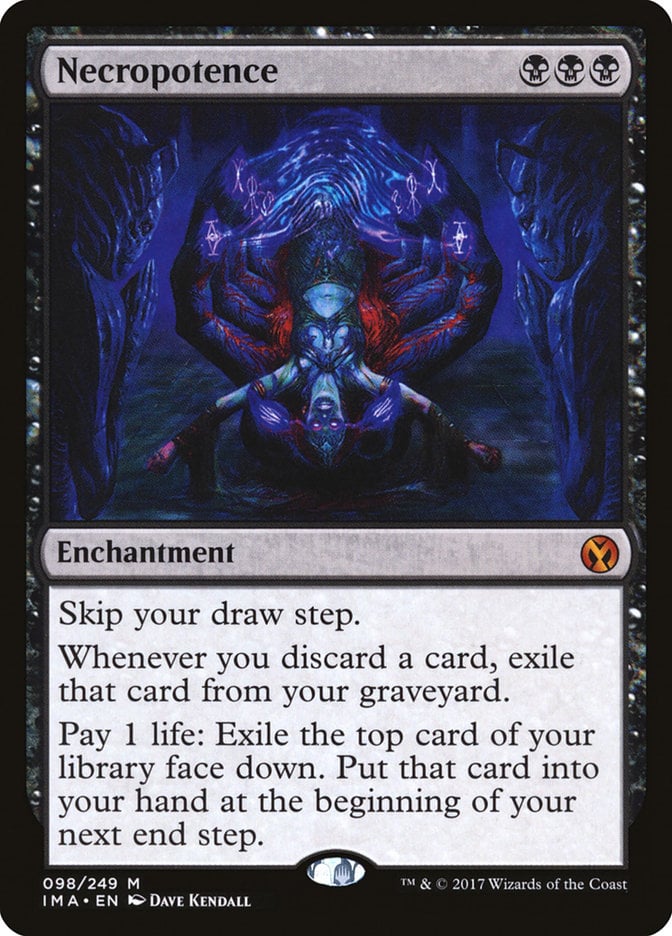
Necropotence suffered the grim fate of those that wield too much power: Once one of strongest spells in all of MTG, it got banned in most formats and now it's only playable in Vintage (where it's restricted) and Commander.
It's still a massive powerhouse in the 100-cards format: Drawing cards in exchange of life is an excellent deal in EDH. It's quite the staple in Vintage, though, for black-heavy decks that want to dig deep for their combo pieces.
Luckily for those willing to wield such power, Necropotence has recently been reprinted as part of Wilds of Eldraine's Enchanting Tales bonus sheet (in several versions, including the Anime alternate style), driving its price down to close to $10.
#32. Dig Through Time
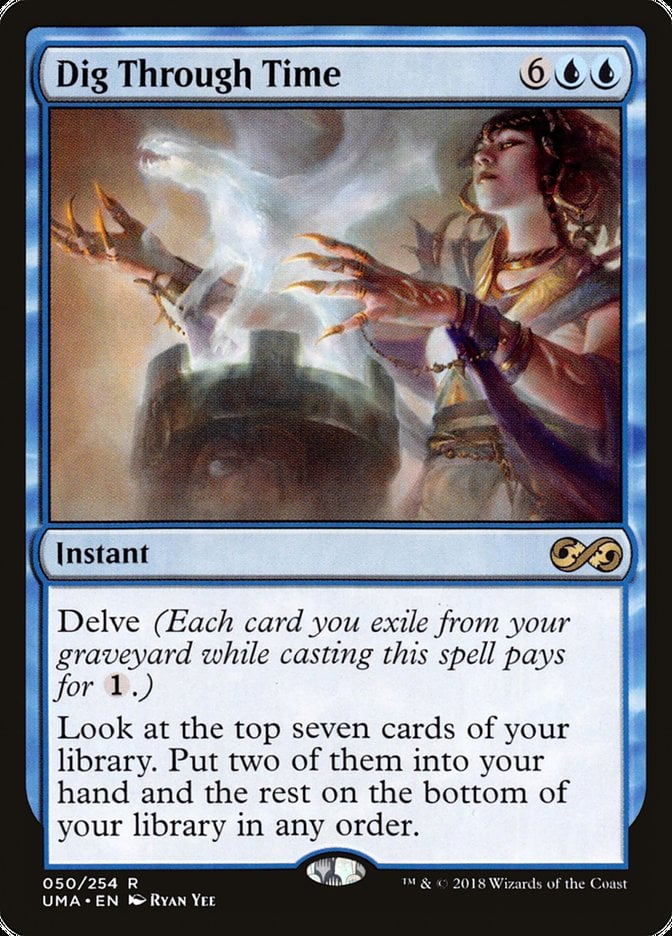
Often compared with Treasure Cruise, Dig Through Time offers good card draw and excellent card filtering. If there's a card you desperately need then Dig Through Time is the next best thing after tutor effects like Demonic Tutor, and with Dig Through Time you're always up a card.
The delve keyword lets us cast this spell soon enough. Notice that every type of card works for delve, so lands (like a fetchland you sacrifice early) helps to pay the bill.
#31. Treasure Cruise
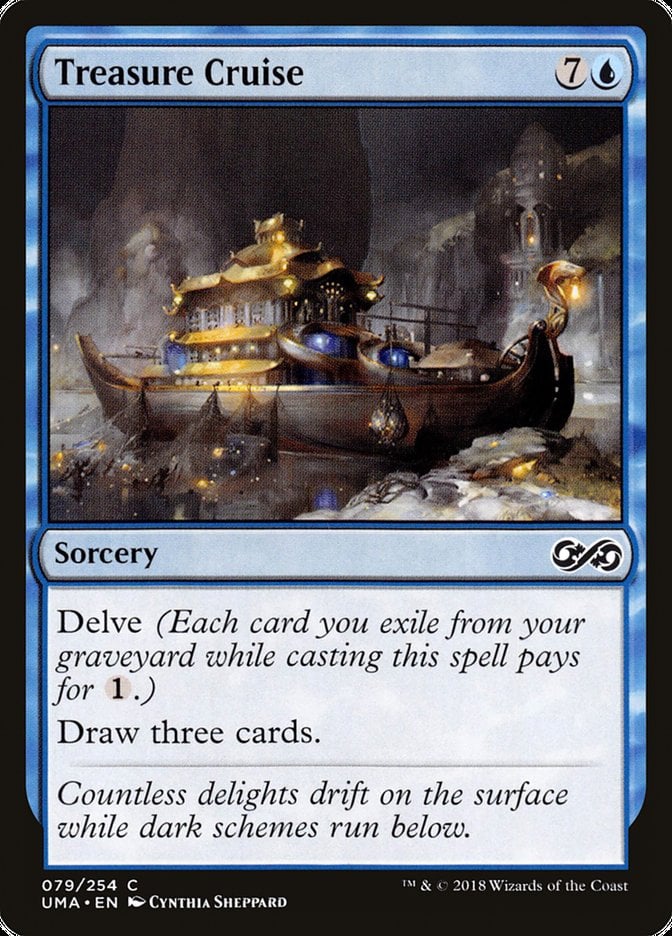
“Mom, can we have Ancestral Recall?”
“We have Ancestral Recall at home.”
And, well, at sorcery speed. But for decks that can fill their graveyard quickly, Treasure Cruise is indeed the homemade, slow-food version of Ancestral Recall.
#30. Black Market Connections
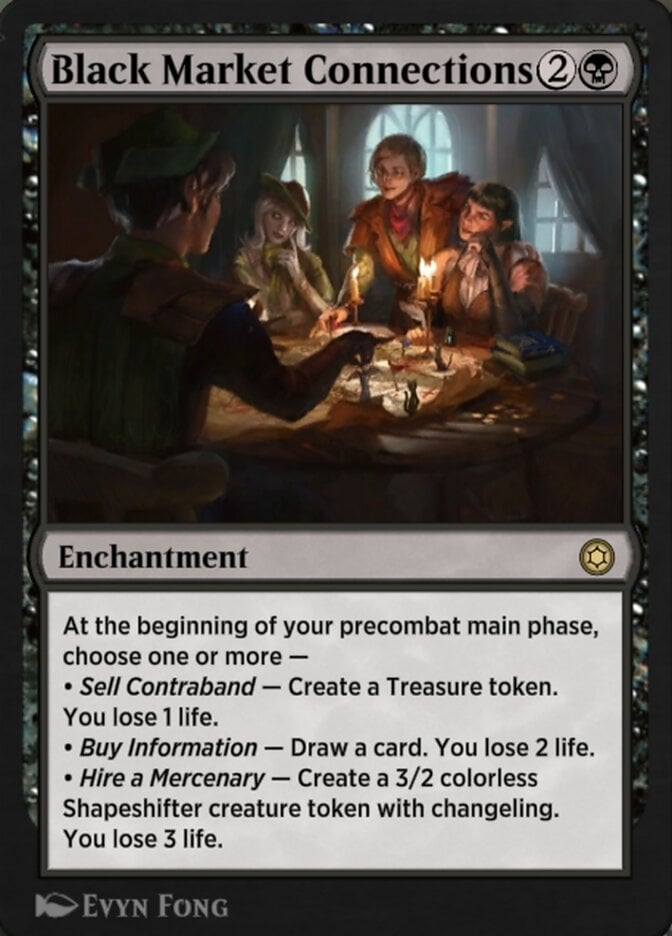
Black decks tend to have access to life gain and usually have no problem making these connections shine. Just don't be too greedy and keep in mind you can choose just one of the options every time.
Extremely popular in Commander since printed in Commander Legends: Battle for Baldur's Gate, Black Market Connections provides two of the most straightforward ways to gain card advantage: either by directly getting cards in your hand, or by slamming extra cardboard on the table.
And, of course, you also get to ramp and fix your mana with the first ability. That's not card advantage, but it always comes in handy!
These connections used to cost north of $30, but a recent reprint in The Lost Caverns of Ixalan Commander has put Black Market Connections at around $18-22 per copy.
#29. Big Score
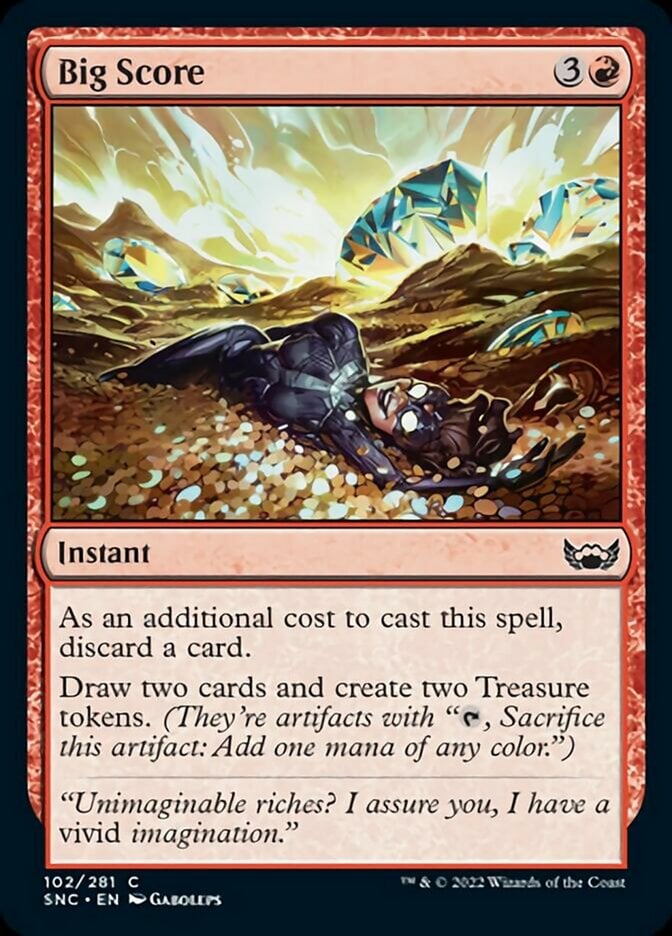
Big Score and cards like it have brought some incredible power creep goodness to the hands of Standard and Commander players. This is technically card advantage since it goes two-for-two and gives decent selection.
The extra mana on top is great fixing, and this card also slots great into multicolored decks.
#28. Toski, Bearer of Secrets
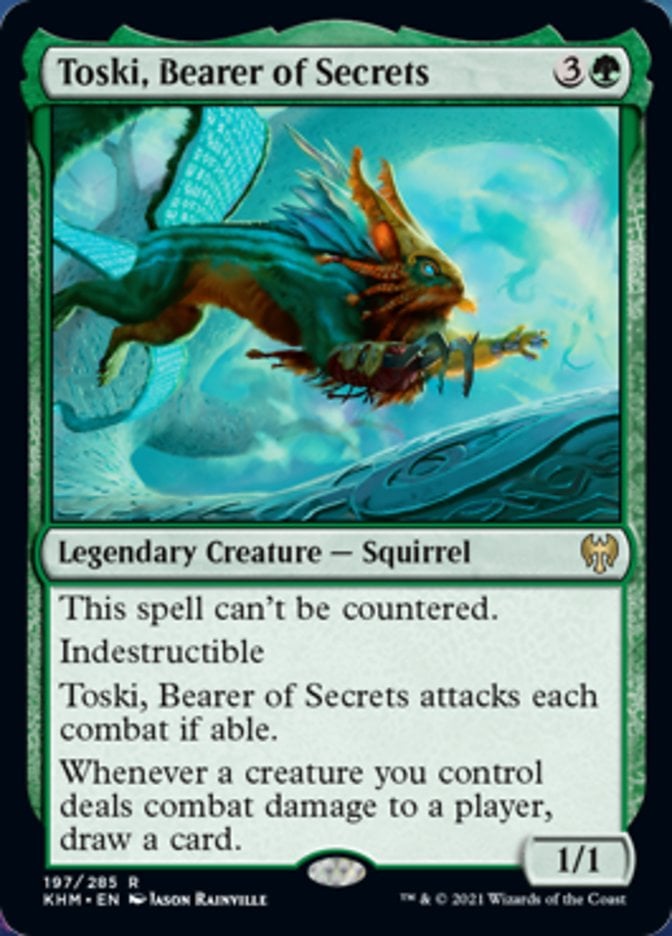
Toski, Bearer of Secrets is a hard-to-kill squirrel rascal that nets you plenty of card draw throughout a game. It’s pretty difficult to remove between being uncounterable and indestructible. The unfortunate part is that it has to attack each turn if able.
In Commander you typically have at least one player who's open, or who fears your combat tricks.
#27. Gitaxian Probe
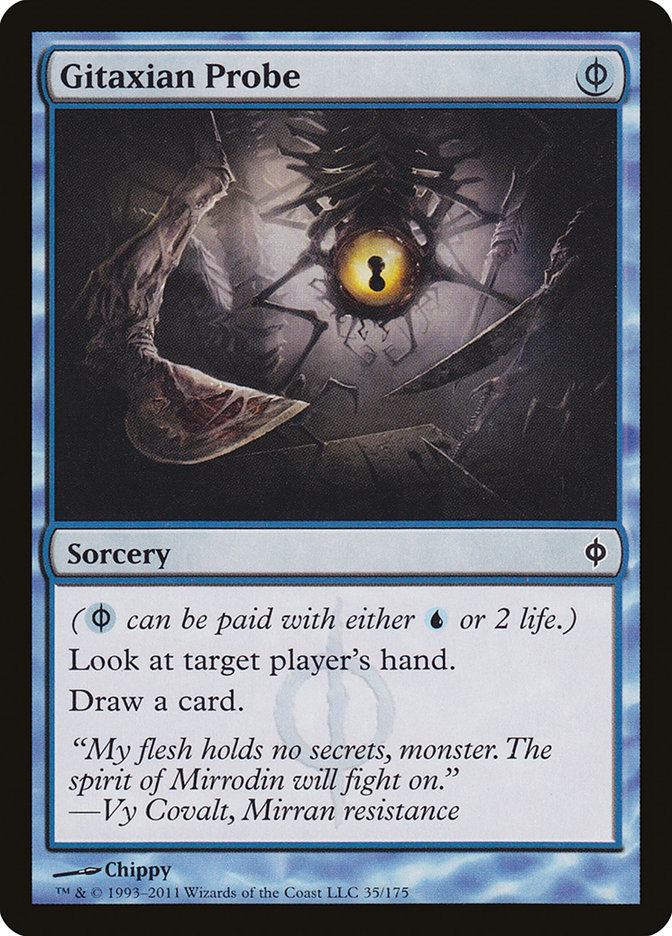
Gitaxian Probe is just incredible. It costs 2 life so it’s practically free. It acts as a near-free cycler, but you also get to look at an opponent’s hand.
That’s the real benefit here, because having that information allows you to sculpt your turns and strategy for the entire game and gives you a head start on countering your opponent’s likely game plan.
#26. Growth Spiral
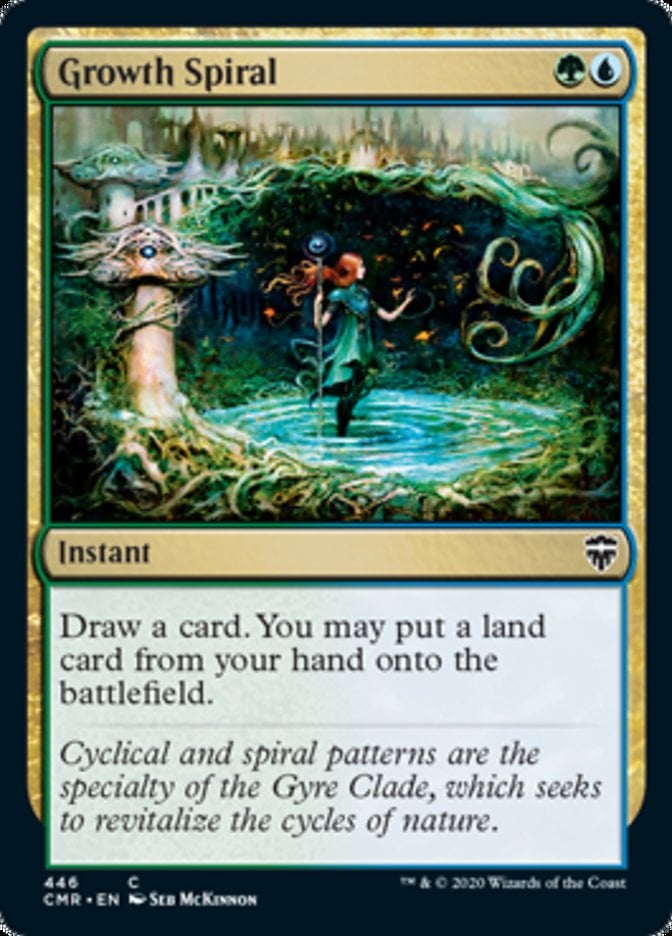
Card advantage usually refers to either cards in hand, or cards affecting the board and threatening our foe. But ramping is another way of getting ahead, and Growth Spiral lets us do so while replacing itself.
#25. Rishkar’s Expertise
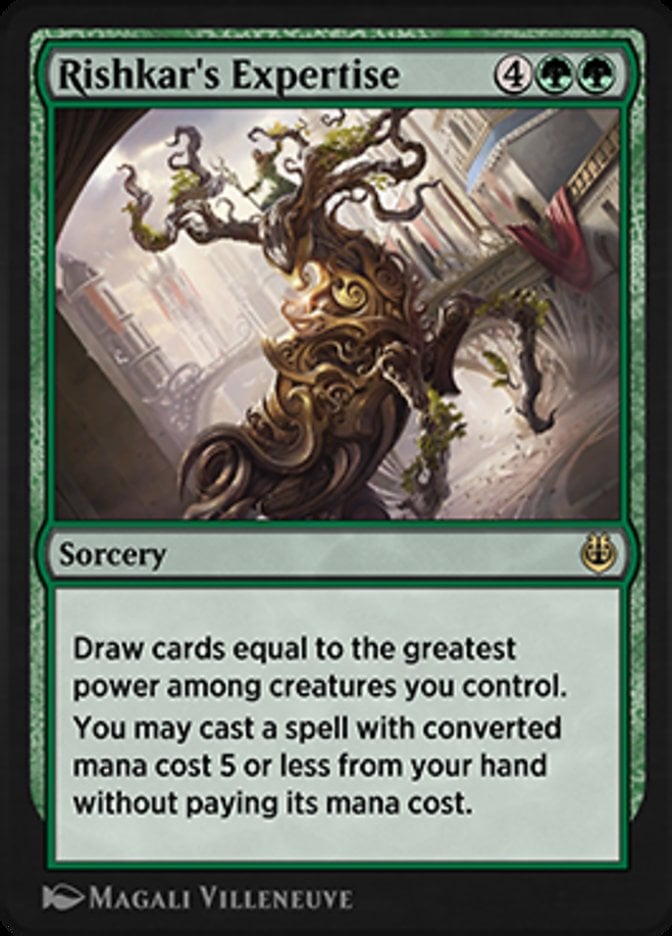
Rishkar's Expertise is a 6-mana sorcery that draws you cards equal to the highest power among creatures you control. Green loves playing big creatures, so having a draw-eight (or draw-ten) isn’t out of the question.
To top things off it lets you cast a 5-drop from your hand without paying its cost, effectively making it a 1-mana draw spell with an upside.
#24. Deadly Dispute
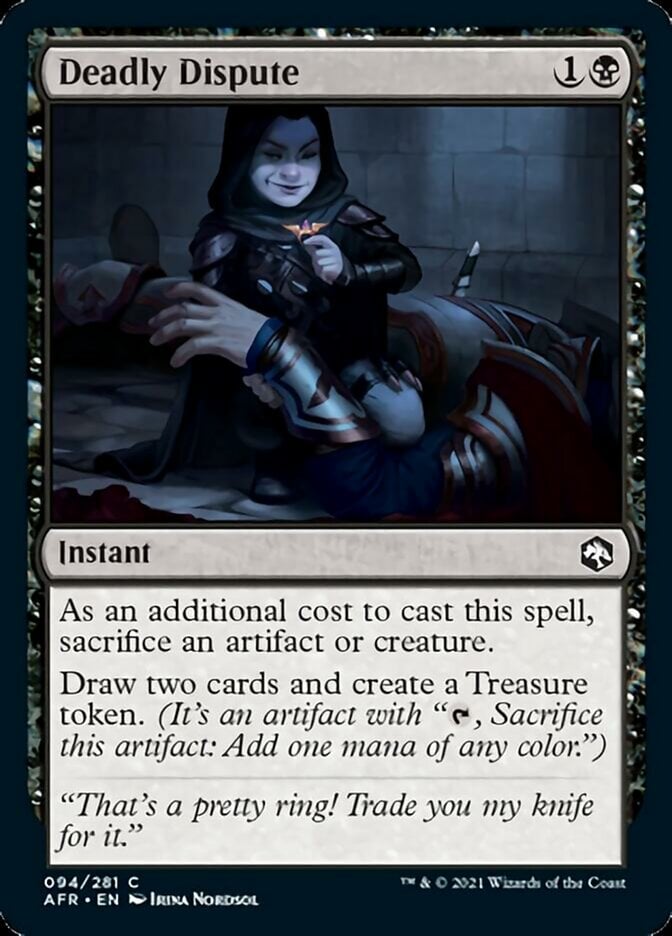
Sacrificing a creature that was just about to die from a violent case of Fatal Push is a subtle way of gaining card advantage – we're basically driving the opportunity cost to zero.
Yet even when we can't outmaneuver our foe in such a way, Deadly Dispute is an amazing source of card advantage for any deck that has an abundance of either cheap creatures or artifact tokens (like Treasures), and if timed correctly can even help fix your mana.
Deadly Dispute is among the most popular black cards with “token” in its text in Commander decks, it shines in Pauper, and is a Pioneer staple in Rakdos Sacrifice. All-in-all, one of the best black instants.
#23. Bolas’s Citadel
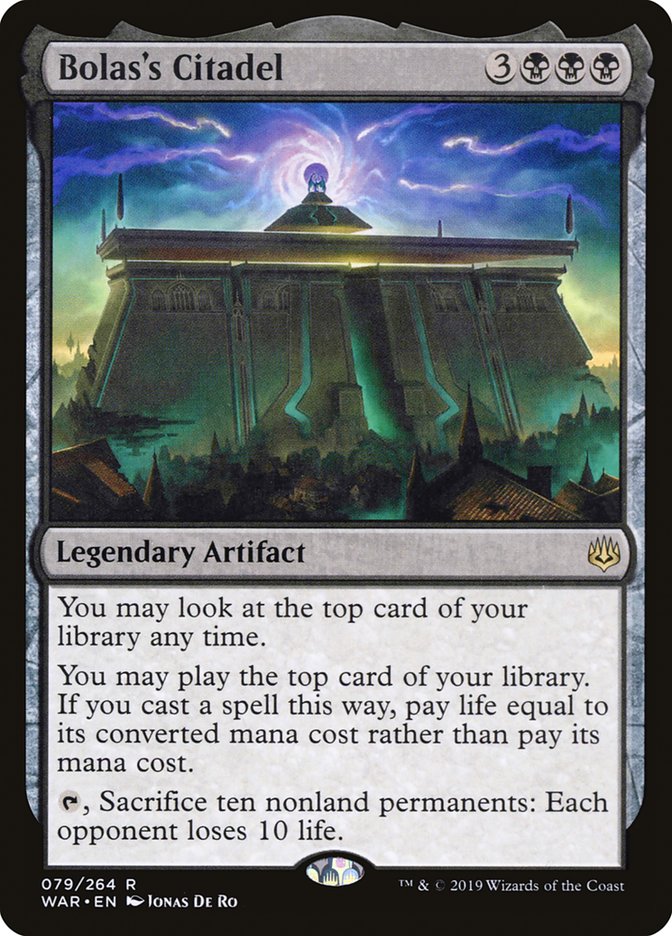
Bolas's Citadel offers instant-speed card information on the top of your library and also lets you cast spells from the top by paying life, including playing lands.
You can carefully craft your draws with this. Play cards off the top when they’re useful or when you need to find better ones, or leave them on top when the cost is too high or you don’t mind holding them for later.
#22. Takenuma, Abandoned Mire
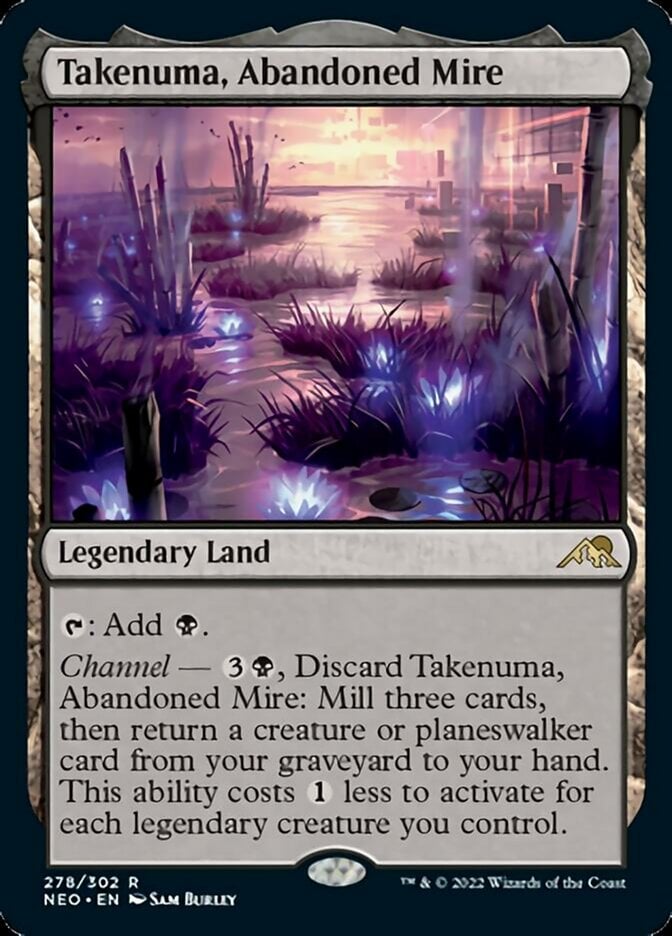
Technically speaking, Takenuma, Abandoned Mire‘s ability is card-neutral: If you channel it, you end up with the same amount of cards in your hand.
But as noted in previous cases, card quality is an important late-game factor: Once we have more mana than we can spend, being able to exchange a land we don't need for the best creature or planeswalker in our graveyard is an amazing deal, and a form of card advantage.
The flexibility of being a land early and our best graveyard spell later makes Takenuma, Abandoned Mire a multi-format star, seeing competitive play in Standard, Pioneer, Modern and Commander.
#21. Solemn Simulacrum
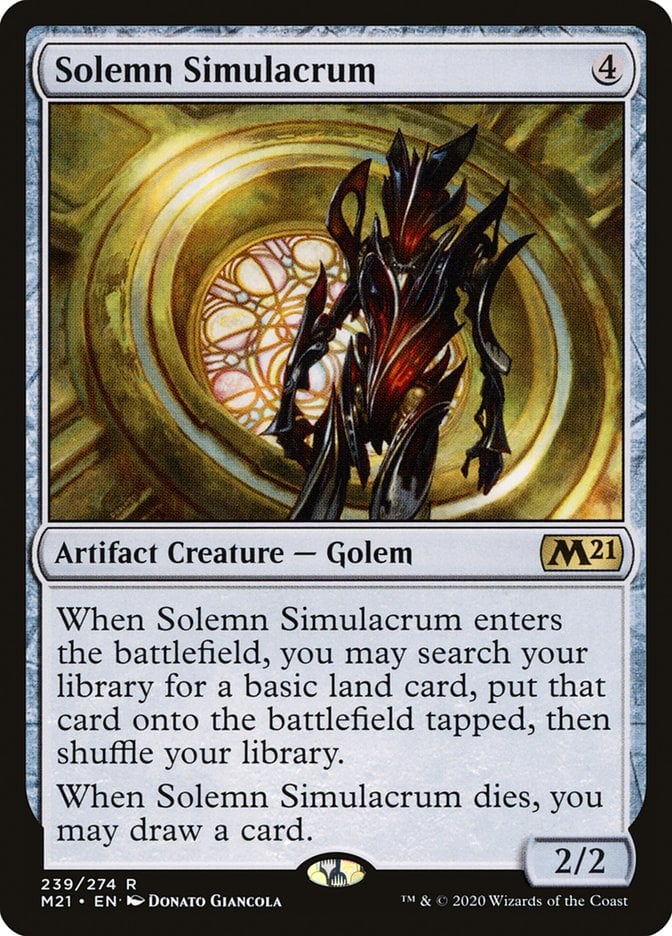
A Swiss Army artifact, Solemn Simulacrum does it all! It ramps, it chump-blocks to buy us some time, then draws us another card as it bids us farewell.
Solemn Simulacrum will never be the star of the show, but every team needs these team players!
#20. The Great Henge

The main reason to play The Great Henge is for its ramping capabilities, working as a green-tinted Sol Ring that also heals you back to top shape.
But, of course, drawing a card every time a nontoken creature enters the battlefield is a terrific source of card advantage!
Such a “remove or die” threat commands quite the price: The Great Henge sits at around $35-$45, making it the second most expensive card in this ranking after Wheel of Fortune.
#19. Sylvan Library
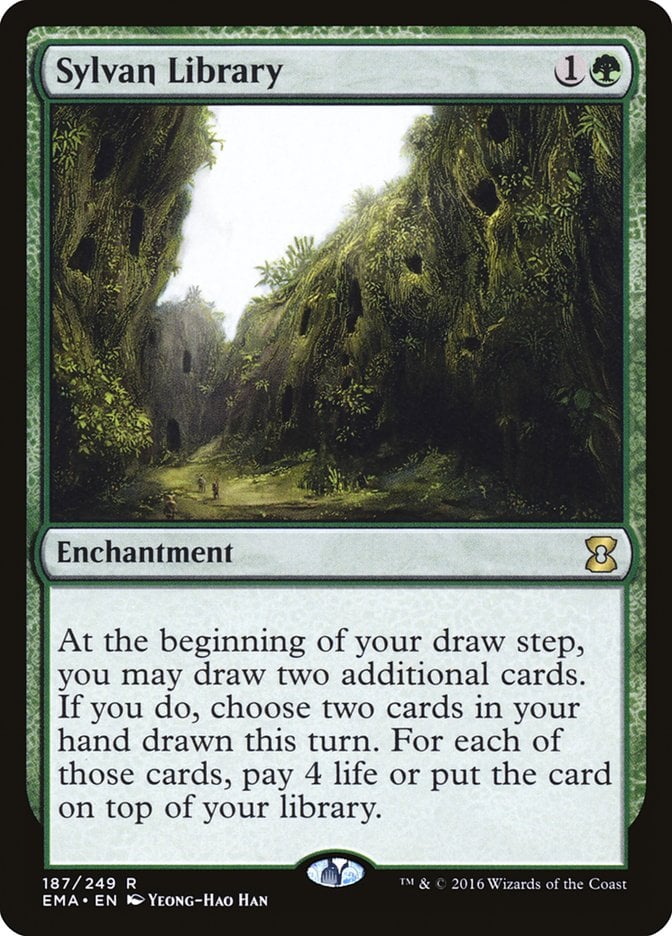
Unlike some of the other green cards, Sylvan Library offers guaranteed dividends in either card draw or selection.
Have plenty of life to spend? Draw all three. Running low? You still get the excellent selection. What’s not to love?
#18. Windfall
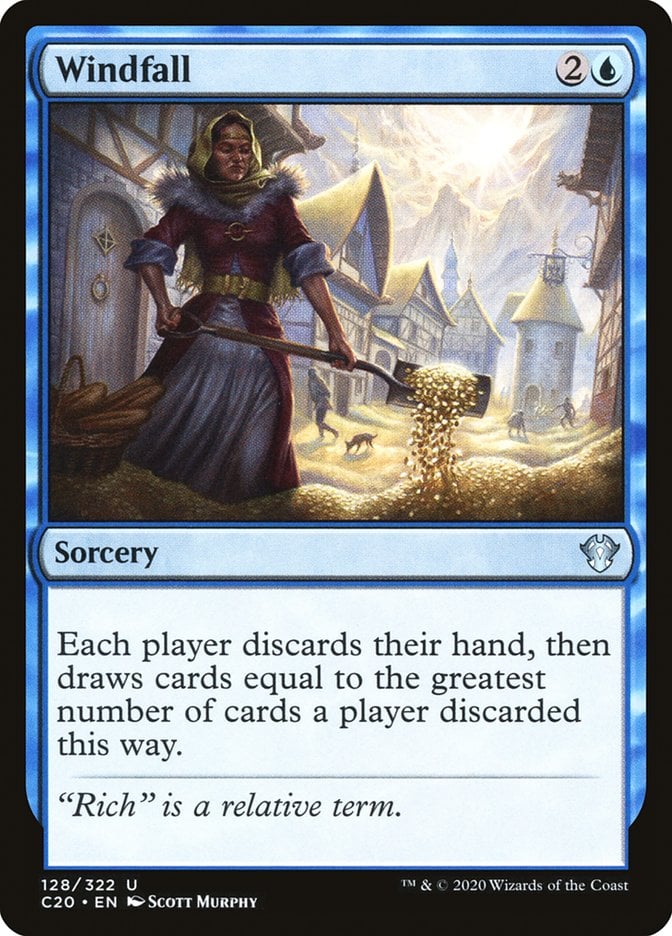
Windfall does require some setup and a deck that knows how to put it to good use; this is not a card you can just jam and call it a day. But for decks that empty their hand fast, and/or decks that thrive on discard synergies, Windfall can be a 3-mana draw-seven (and even more, if you have ways to force your foes to draw!).
Windfall is so good that you can only play it in Vintage (where it's restricted) and Commander, and is one of the best wheel effects available to blue.
#17. Phyrexian Arena
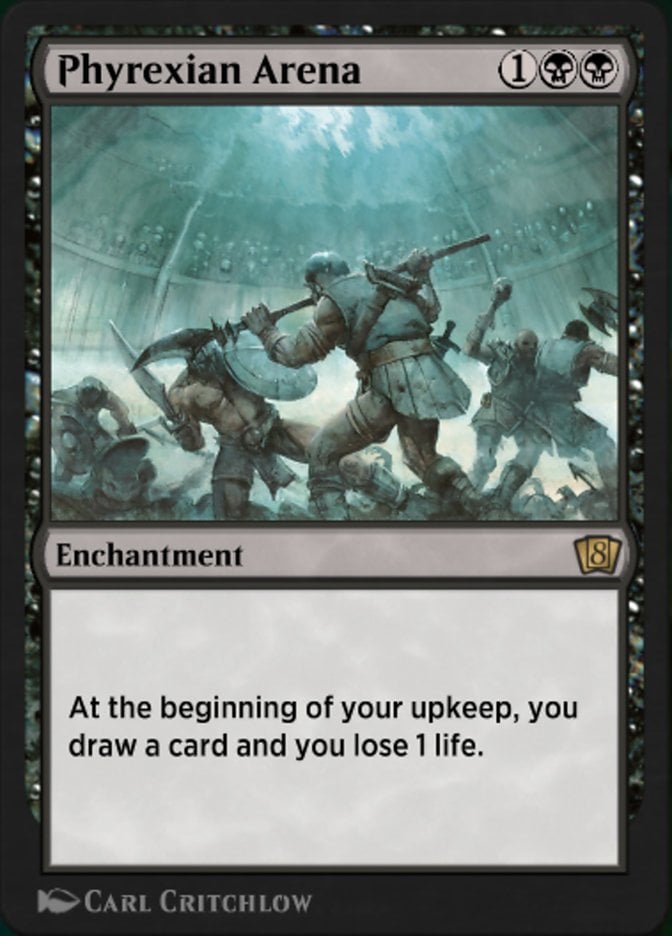
Phyrexian Arena provides card advantage in the most basic sense of the word: You play one card and then you either get several cards out of the deal, or force your foe to spend a card in response. And sometimes you get both! It's not hard to see why Phyrexian Arena is so popular in Commander.
#16. Mind Stone & Commander's Sphere
There's such a thing as “too much of a good thing”, so good thing that you can get rid of Mind Stone or Commander's Sphere whenever you have too much mana and would rather find something to spend that mana on.
Both Mind Stone and Commander's Sphere technically fall into what in MTG lingo is considered a cantrip (cards that, among other effects, “replace themselves” with another card), but make this card advantage ranking since, above all in long games, turning extra (useless) mana into extra cards is indeed card advantage.
#15. Austere Command & Farewell
White has no lack of good board wipes – after all, it's the color that started it all with Wrath of God. So much so that we'll highlight two for this ranking.
Austere Command costs two more mana than its wrath-y ancestor, but the higher price comes with a lot of flexibility: It can remove enchantments and artifacts, and if you tailor your deck accordingly you can make sure either your weenies or your big boys are spared.
None of your creatures will be spared with Farewell, but exiling (rather than destroying) and the ability to reset graveyards allows for even greater flexibility.
And in this case there's no such thing as too much of a good thing: Your deck or sideboard can certainly include both if you need to!
#14. Ponder
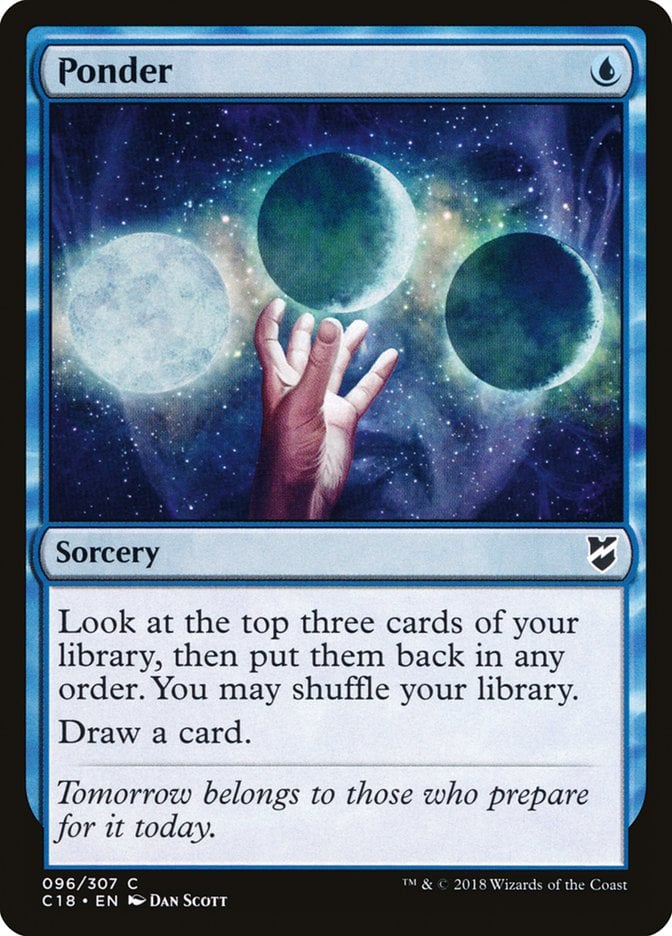
Filtering your next draws is a subtle way to gain card advantage: Having more cards is good, but having better cards is also important. If you have more mana than you know what to do with, then each land you draw is practically the same as not having drawn anything.
Ponder provides two workarounds for that, by letting us rearrange the top three cards of our library or shuffle the whole thing if none of them is what we need. So even if you don't increase the amount of cards in hand (Ponder is in this sense just a cantrip), you have much better odds of finding the card you need.
#13. Faithless Looting
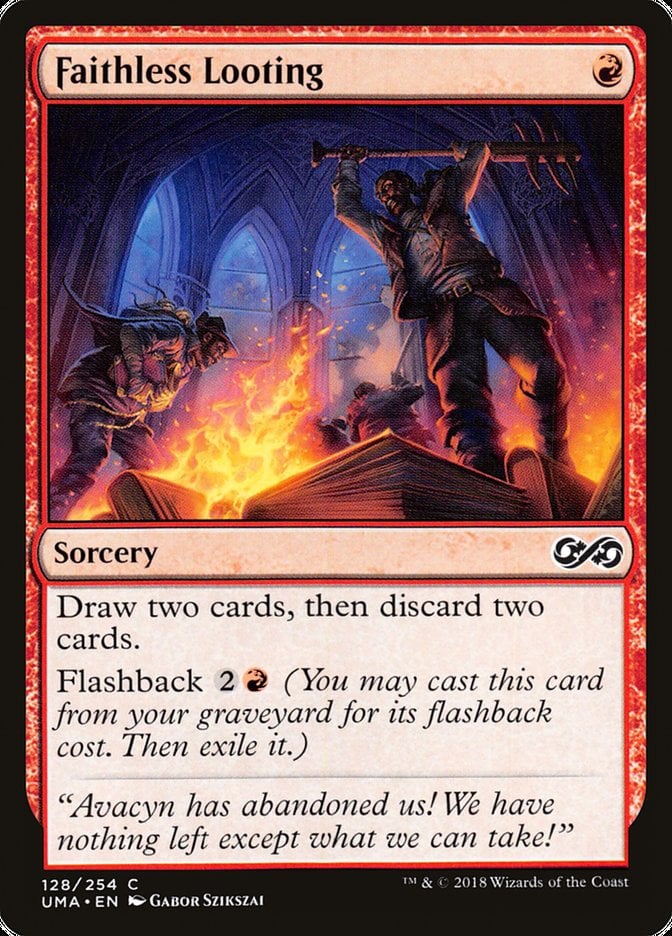
Faithless Looting is a cheap spell that loots for two but has an ultra-cheap flashback ability that keeps the value coming throughout the game.
This is mostly used in Rakdos ()-based reanimator decks, which have none of the drawbacks of discarding two cards because they easily just pitch their reanimation targets and reap the rewards.
#12. Eternal Witness
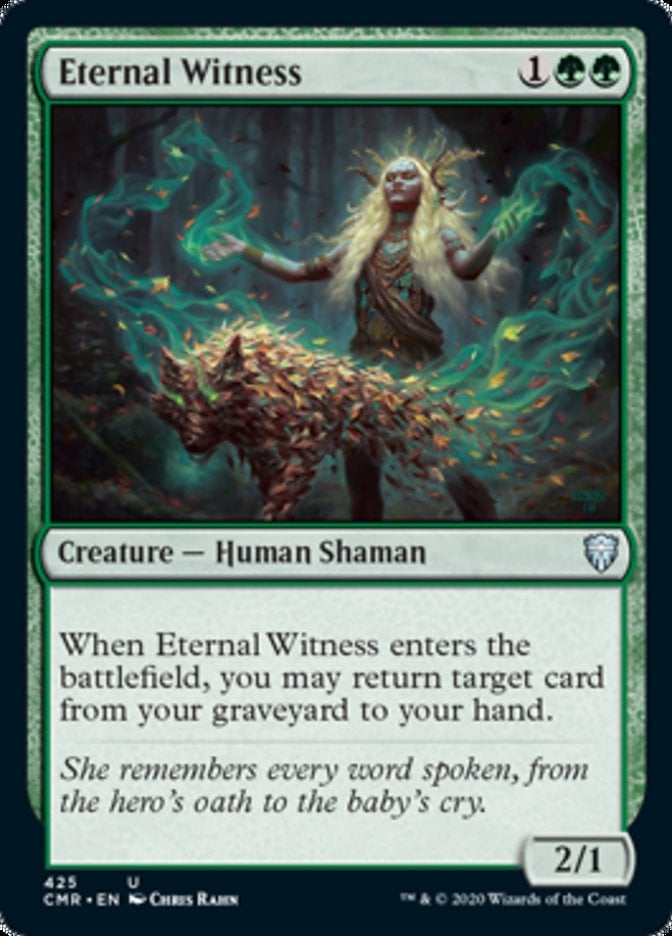
Eternal Witness demonstrates that card advantage isn't just about quantity, but also about quality. If we go by quantity, Eternal Witness isn't much to look at: For we get a 2/1 body on the board and one extra card in our hand, which is basically what a cantrip offers. But getting anything from our graveyard, without restriction, makes Eternal Witness pretty much a graveyard-focused Demonic Tutor.
#11. Cyclonic Rift
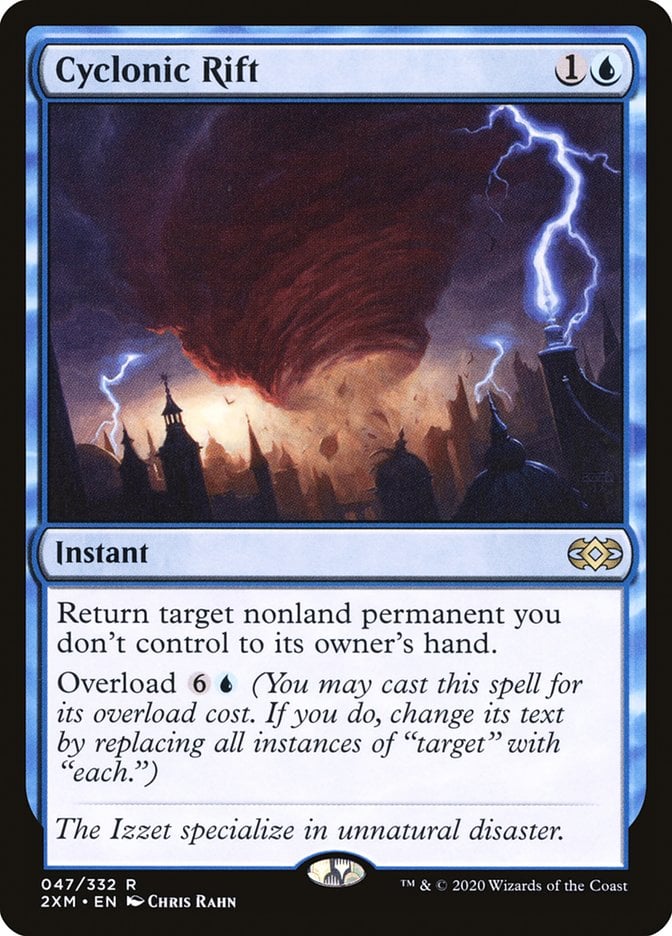
Fun fact: The fine folks at EDHREC keep a Salt index that tracks which cards their website's users consider the saltiest.
Cyclonic Rift sits at around #15 in this ranking, and sees a lot more play (sometimes by an order of magnitude or more) than any card above it. It's that good (and annoying!).
Cyclonic Rift serves two functions. In the early game, it can stop a must-answer threat; in fact, you'll actually be down one card if you use this mode, but you'll stay alive and in the game. In the late game though, Cyclonic Rift turns into a brutal win condition: It removes everything that is neither yours nor a land, and since it's not targeted it bypasses color protection and hexproof.
#10. Skullclamp

Got extra tokens or mana dorks? Start equipping them with Skullclamp! They’ll drop like flies, you’ll draw cards, and your opponents will start sweating. “If they don’t need the mana anymore, what exactly are they looking for…?”
#9. Blasphemous Act
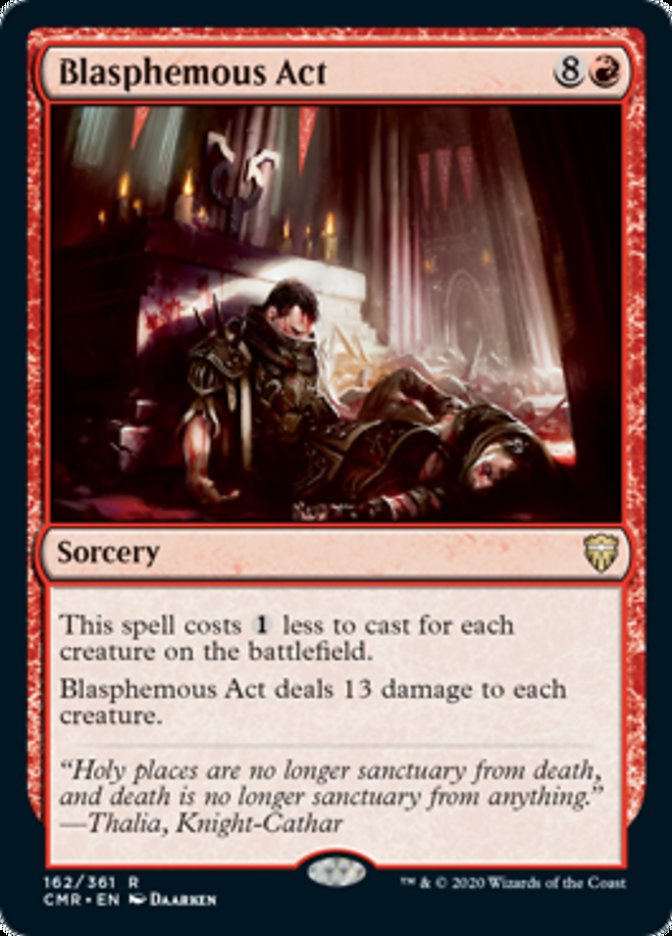
White may have the most board wipes, and blue may have the saltiest… but red happens to have the most popular wrath effect in all of Commander: Blasphemous Act.
Undoubtedly the best red board wipe, it may lack blue's braininess and white's finesse, but it gets the job done and then some. (By the way: Attentive readers may notice that, yeah, green gets no board wipes on this list. That's how Magic's color pie works!)
#8. Memory Jar
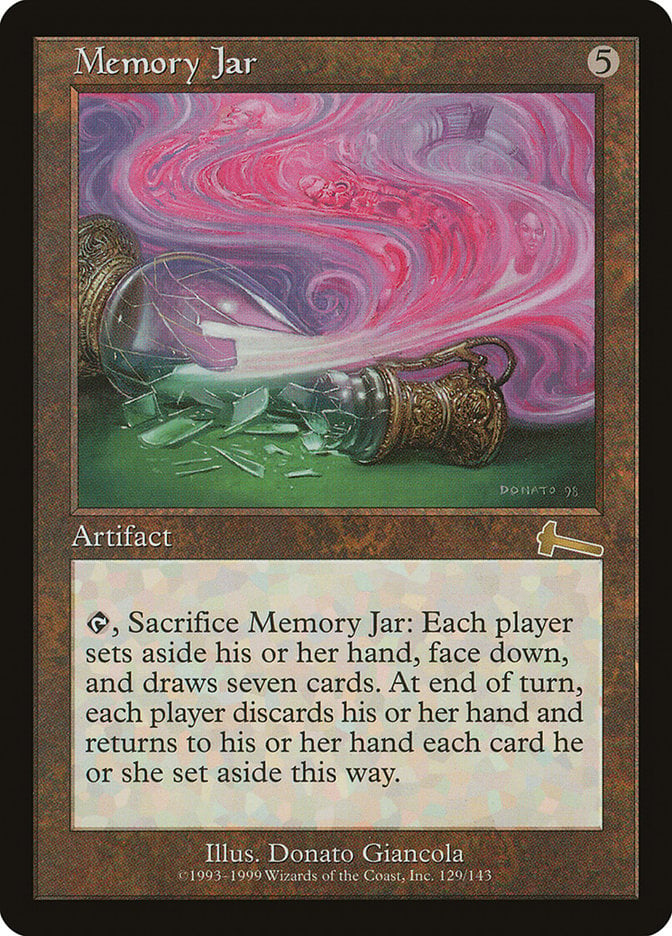
Wheel of Fortune, but with some very nice twists!
For starters, with Memory Jar you get your discarded cards back at the start of the next end step. This is extremely useful when all you have are reactive cards and you need to find more proactive spells: You get to cast whatever you found useful in the 7-card batch, and regain your reactive cards at the end of the turn.
Then again, you may just be able to end the game with whatever you just drew, which is the reason combo decks enjoy wheel effects so much.
Unlike Wheel of Fortune, you can activate Memory Jar during your opponent's turn. Besides letting you find a specific answer for whatever your foe is trying to do, you can often disrupt their combo simply by forcing them to discard their whole hand in the middle of the process.
#7. Wheel of Fortune
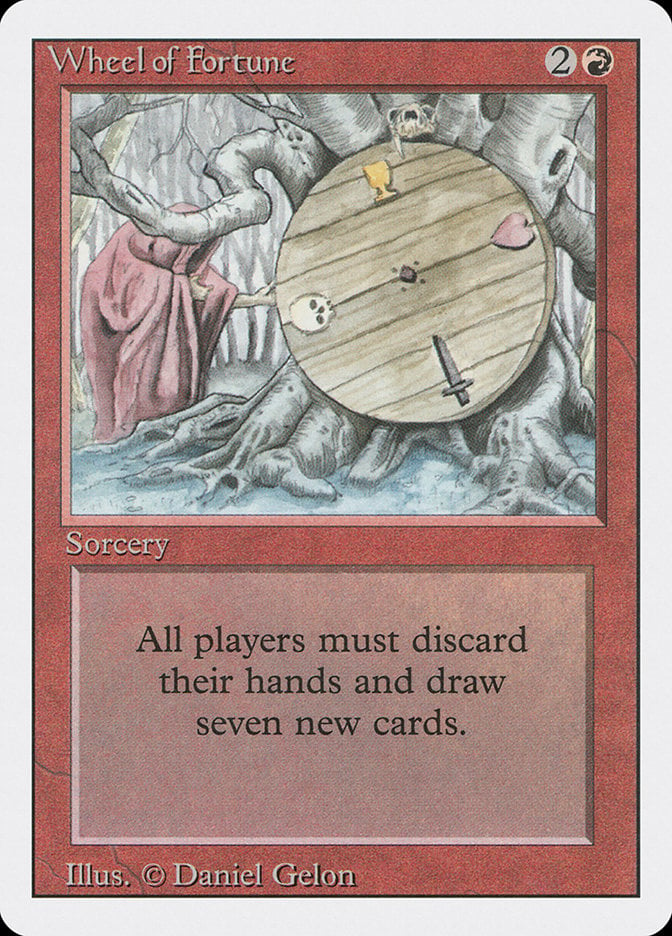
Wheel of Fortune is one of the kings of both card advantage and draw. This wheel doesn’t come with a clause to draw the number discarded but a strict seven, unlike a lot of blue wheels. You’re getting a good trade if you play this on any discardable hand, even if you're already holding seven cards.
The obvious profitable exchange is drawing more cards than you lost, but it’s okay to pitch a poor six or seven and draw what are likely to be much better cards. You might even disrupt game plans from others in the process.
#6. Underworld Breach

Underworld Breach is one of the strongest win conditions in competitive EDH. “Massive card advantage” is at the top of this enchantment‘s job description: Underworld Breach turns your graveyard into a (huge) extension of your hand, and basically provides flashback to anything you cast.
Powerful enough to be banned in Pioneer and Legacy, Underworld Breach pushes card advantage straight into a victory condition.
#5. Brainstorm
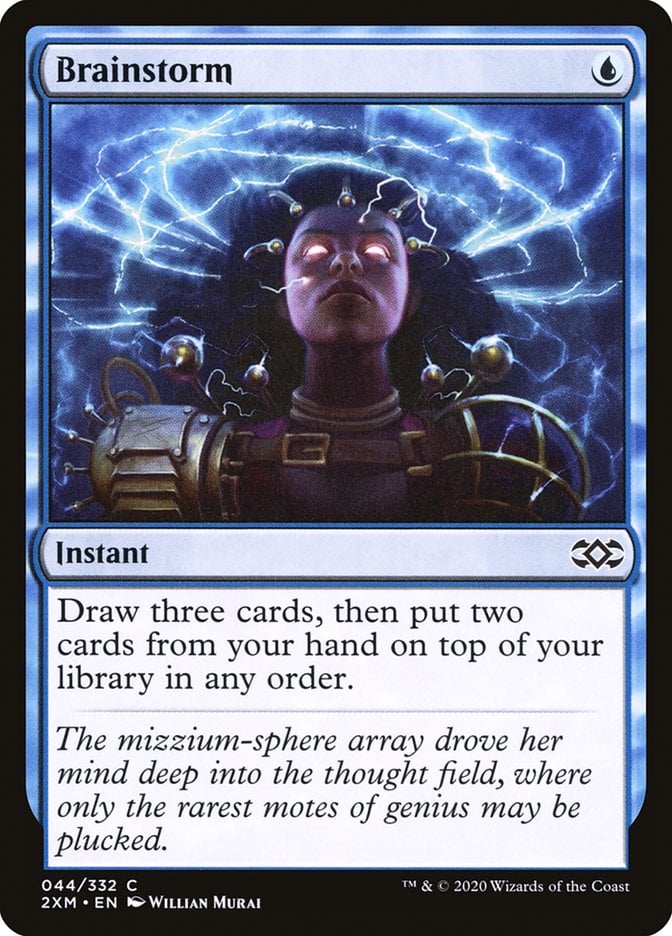
Brainstorm does more than just draw you cards. It also lets you get rid of less desirable cards to the top of your library, which opens the opportunity for you to do things like shuffle them away or mill them into the graveyard.
You can even play sneaky and “hide” cards on top of your library. This softens the impact of certain otherwise card-advantageous spells from your opponents like Thoughtseize.
#4. Sensei's Divining Top
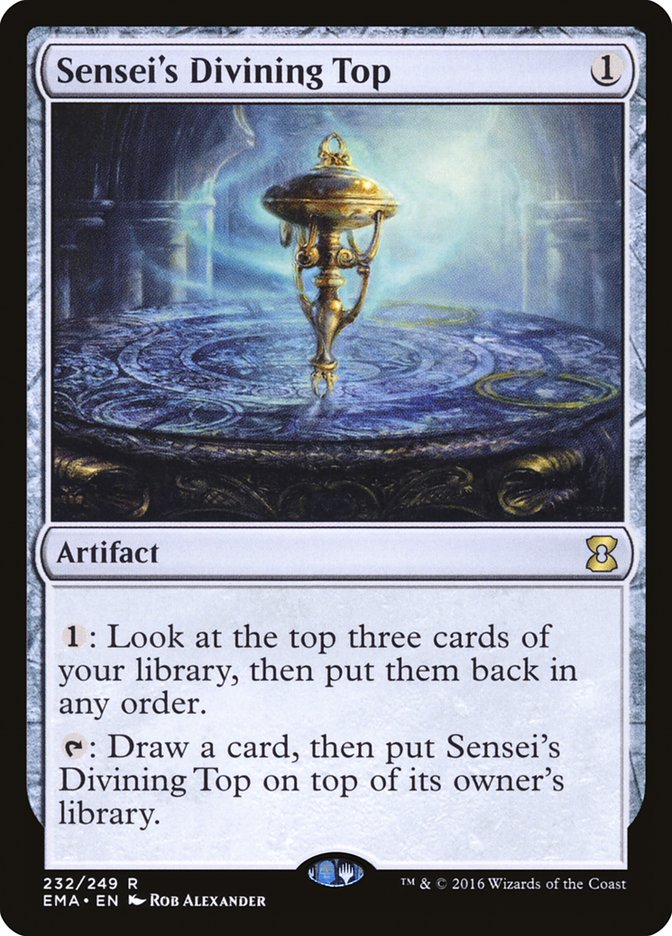
Sensei's Divining Top grabs one of our top spots by way of providing amazing card selection and arranging future draws. It doesn't provide card advantage in the strict sense of the term, since drawing a card tucks the Top in your library, netting a one-for-one exchange.
Sensei's Divining Top is probably one of the best colorless cards in Magic; unsurprisingly, it's yet another spell in our list that got banned in Modern and Legacy, and is only playable in Commander and Vintage.
#3. Mystic Remora
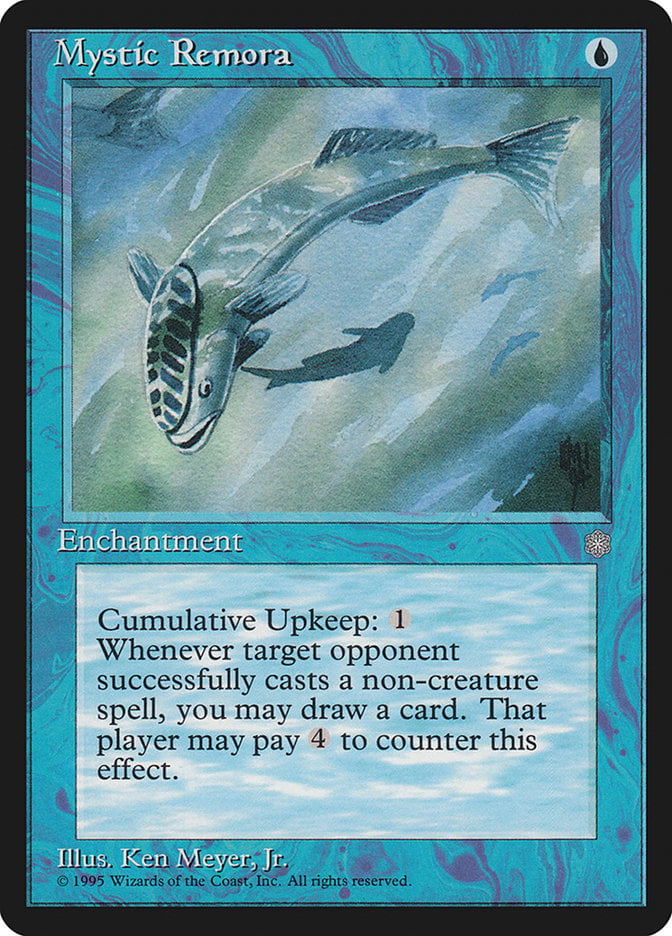
It's not (just) about card advantage. It's about sending a message.
A message along the lines of: “But being as this is a Mystic Remora, the most annoying fish in the world, and would put you in a tough spot, you've got to ask yourself one question: Do I feed the fish? Well… Do ya, punk?”
Mystic Remora is among the best EDH cards because of this fish's ability to scale with the amount of players at the table. Thankfully it's kept itself fairly affordable: just around $5, even though it has seen few reprints since its debut in Ice Age.
#2. Esper Sentinel
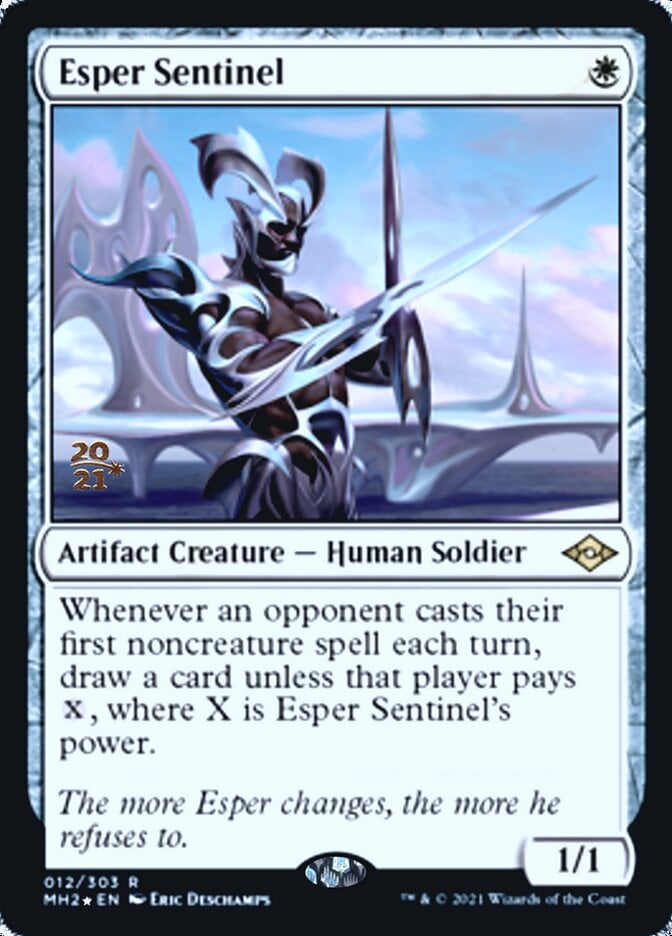
Esper Sentinel, aka Rhystic Buddy due to it's amazing Rhystic Study cosplay, could very well read: “All opponents assume Esper Sentinel won't be a big deal; after a few turns, they all realize it's too late.”
Esper Sentinel is among the best card draw effects in white, and quite sought after. Only printed in Modern Horizons 2, it's hard to find a copy for less than $22-$24.
#1. Rhystic Study
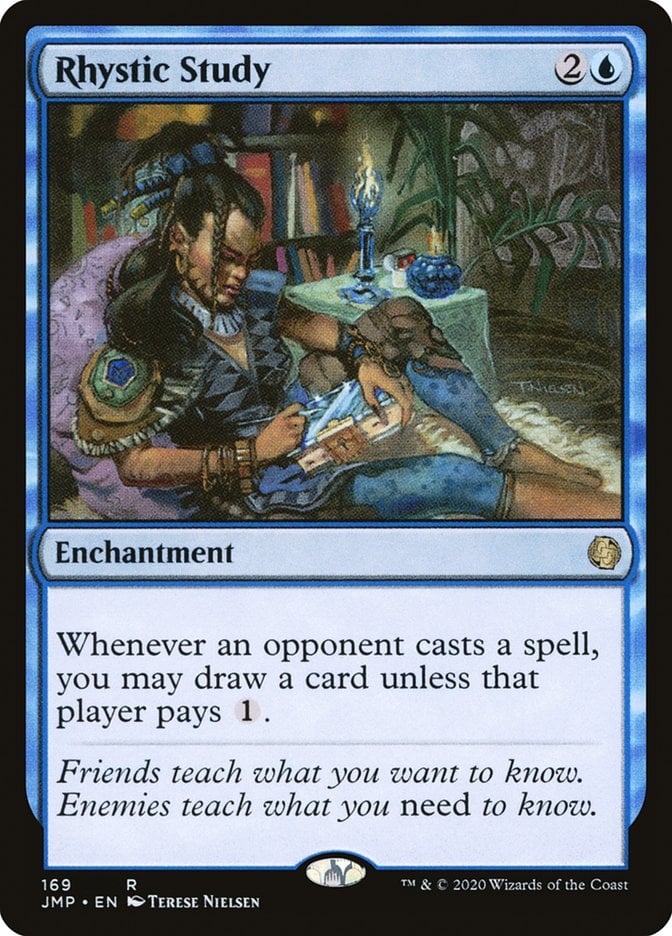
Introduced in Prophecy, players didn't think too highly of “rhystic” spells and we'll most likely never see the mechanic again. But from among that botched batch of spells there's one that is by now one of Commander's staples: Rhystic Study
Hands down one of the best blue enchantments, Rhystic Study triggers with any spell type (whereas Esper Sentinel and Mystic Remora only care about noncreature spells), and doesn't have any of the restrictions those other cards do.
If it's about getting the upper hand by having more cards than anybody else at the table, Rhystic Study is the best of the best.
Best Card Advantage Payoffs
There aren’t really any synergistic payoffs for card advantage like there is for card draw, but there are ways to build your deck and play the game that greatly benefit from having plenty of cards.
Creature strategies, especially red- and green-based ones, heavily benefit from card advantage. Aggressive decks naturally lose out on card advantage in the long run because you want to kill your opponent before that becomes a problem. You’re done for if you put more cards in their hand.
Control decks, on the other hand, function completely based on this idea. Getting consistent two-for-ones and out-valuing your opponent only pays dividends, and a lot of decks try to press this advantage as hard as possible to bury opponents.
Why Is Card Advantage Important?
Card advantage is important because Magic is often a game of attrition, especially in 1v1 formats. Most games come down to who's left standing with something on their side of the board, outside of aggressive beatdowns.
Think about all the times you’ve barely won a game of Magic. It was probably with one more creature than your opponent, one better spell, or one key piece of interaction that wouldn’t be there if you weren’t just slightly ahead in card advantage.
Are Cantrips Card Advantage?
Most cantrips are, in fact, card advantage. They typically all do something on top of drawing a card, usually some kind of card selection.
Whether it’s scrying, giving the best of two or three cards, or hiding other cards away, it all counts as card advantage.
Wrap Up
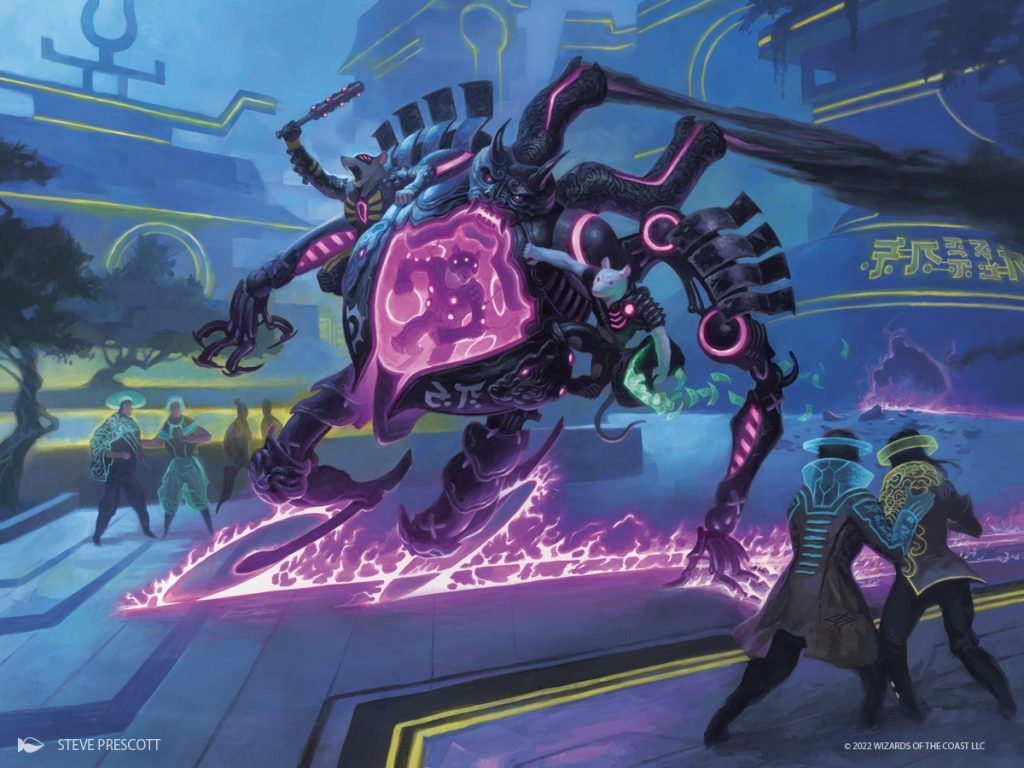
Reckoner Bankbuster | Illustration by Steve Prescott
Card advantage is a part of the game any aspiring Magic player should get to know if they want to succeed. Good card advantage is a sign of efficient game moves, and efficient game moves eventually lead to game-winning results.
What are your favorite types of card advantage? Which specific cards do you like in your decks for card advantage? Are there any that you think beat my picks? Let me know in the comments below or over in the official Draftsim Discord.
Until next time, stay safe and stay healthy!
Follow Draftsim for awesome articles and set updates: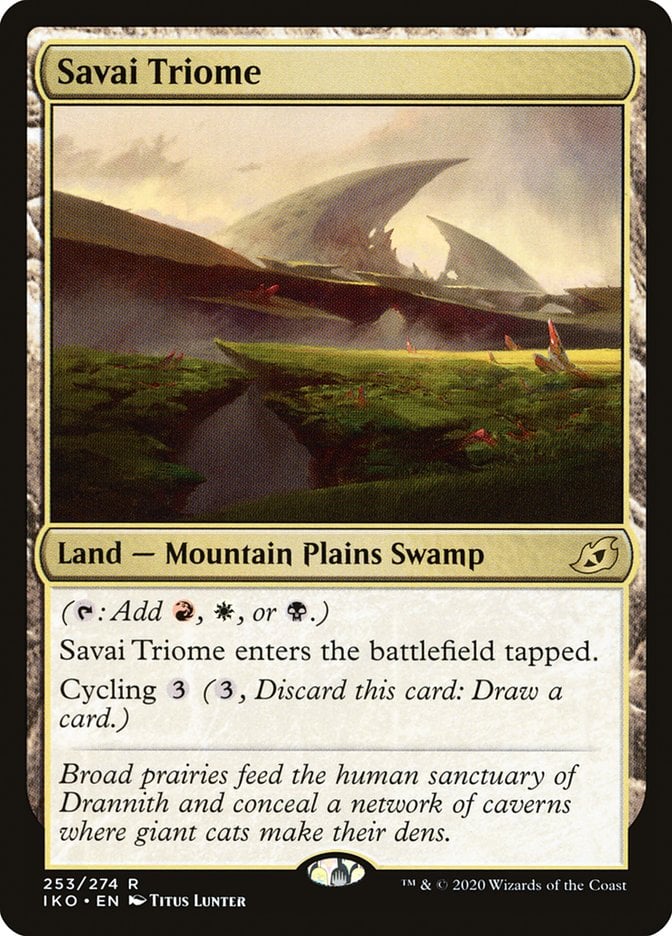
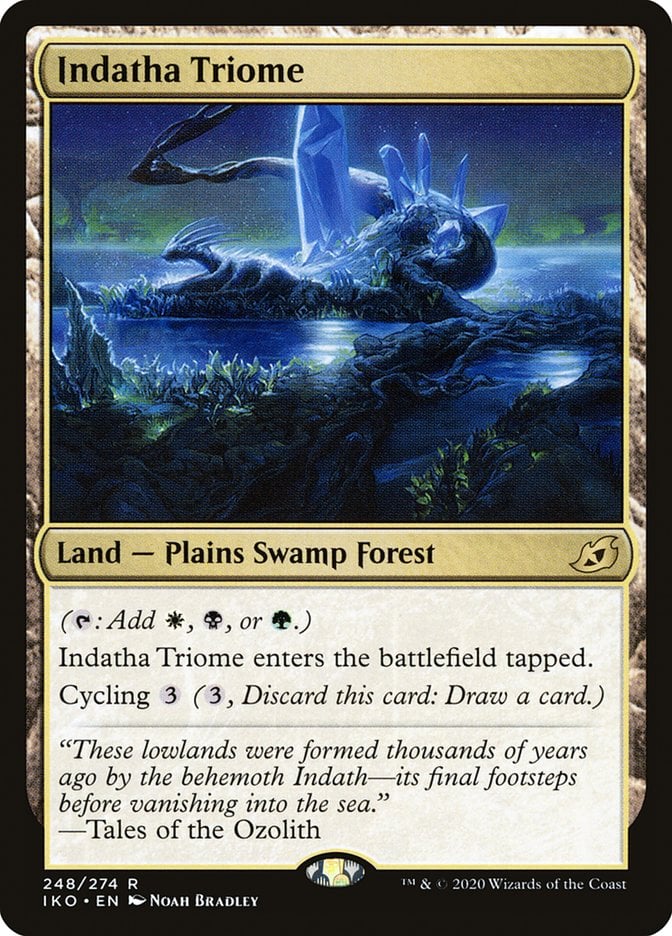
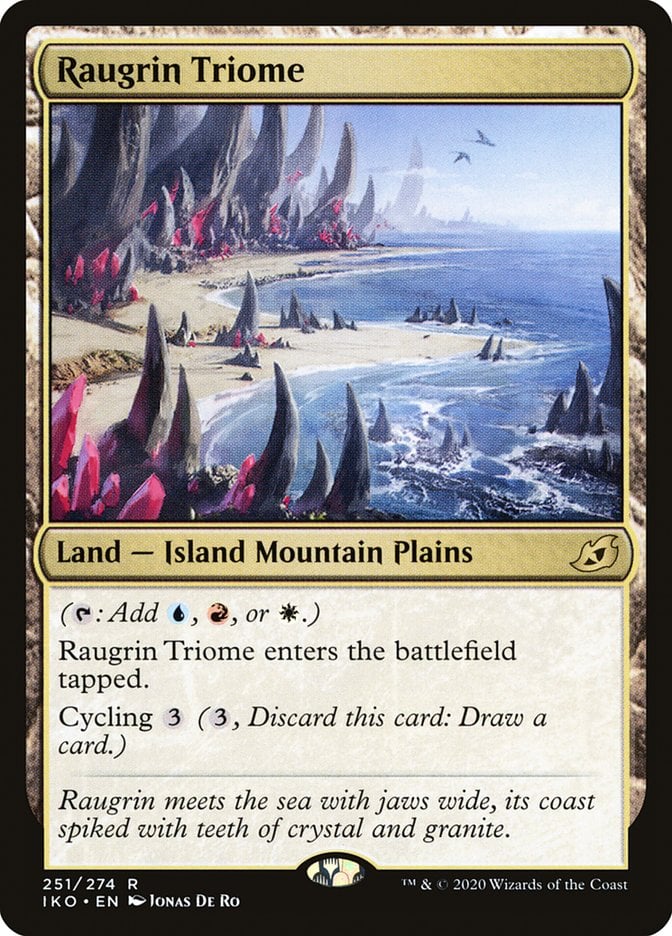

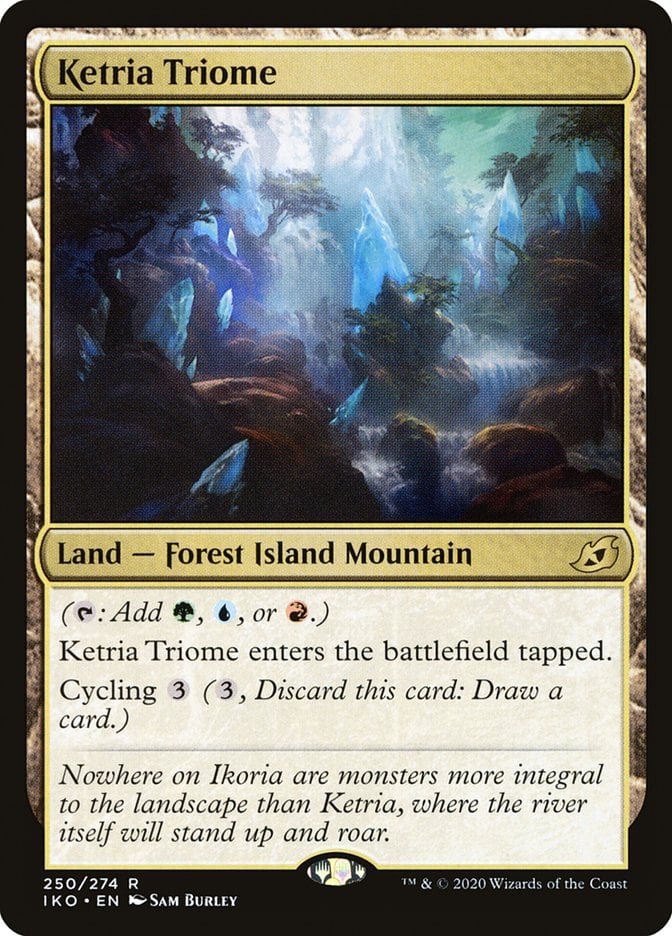
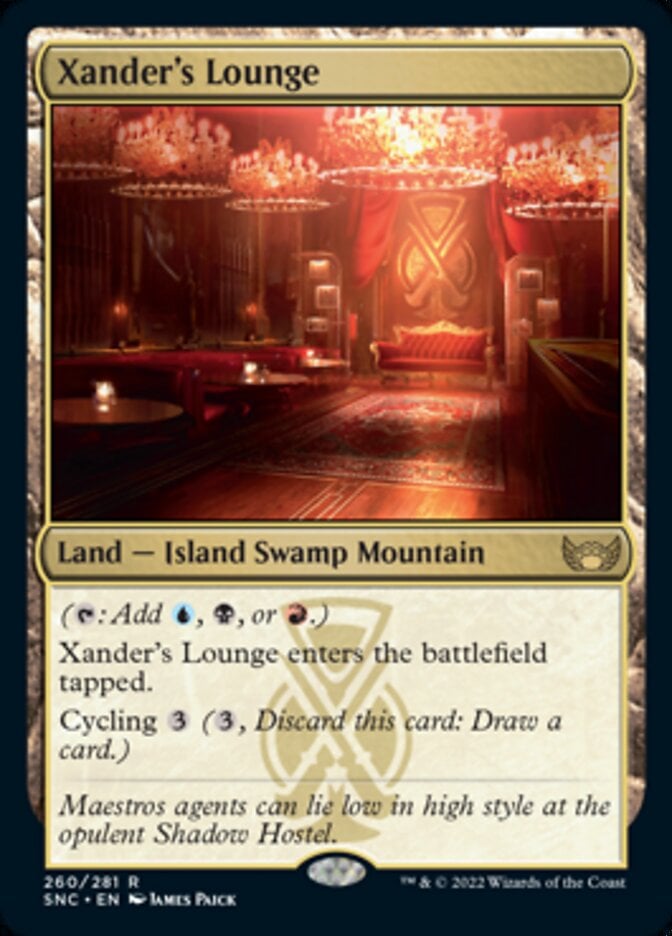
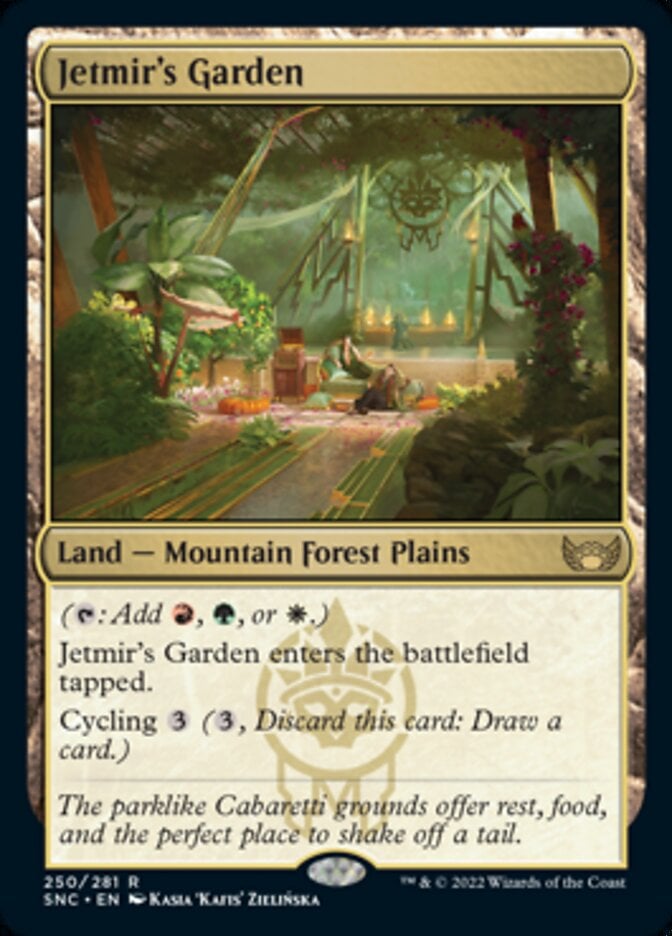
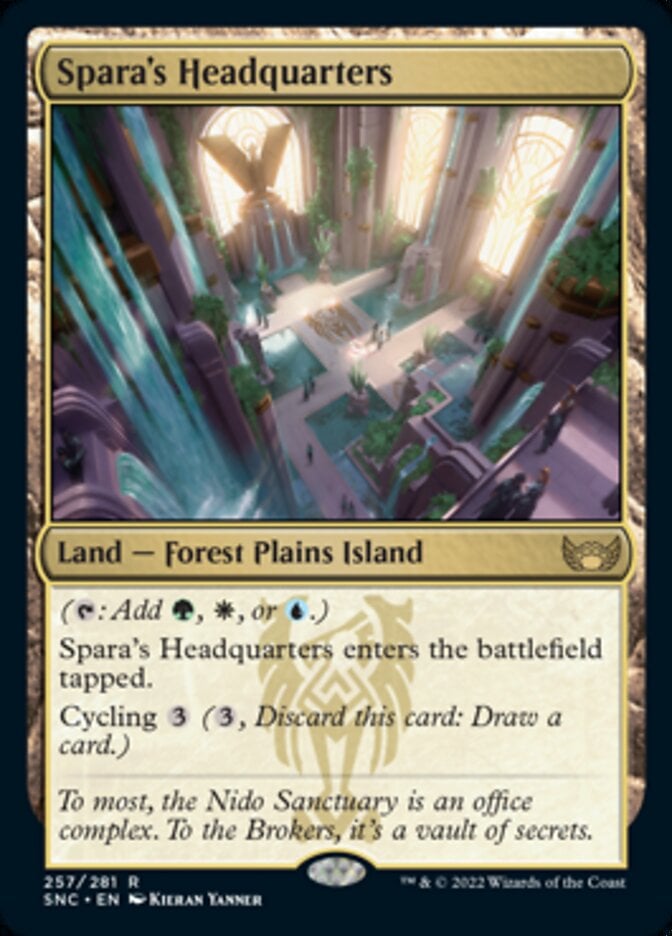
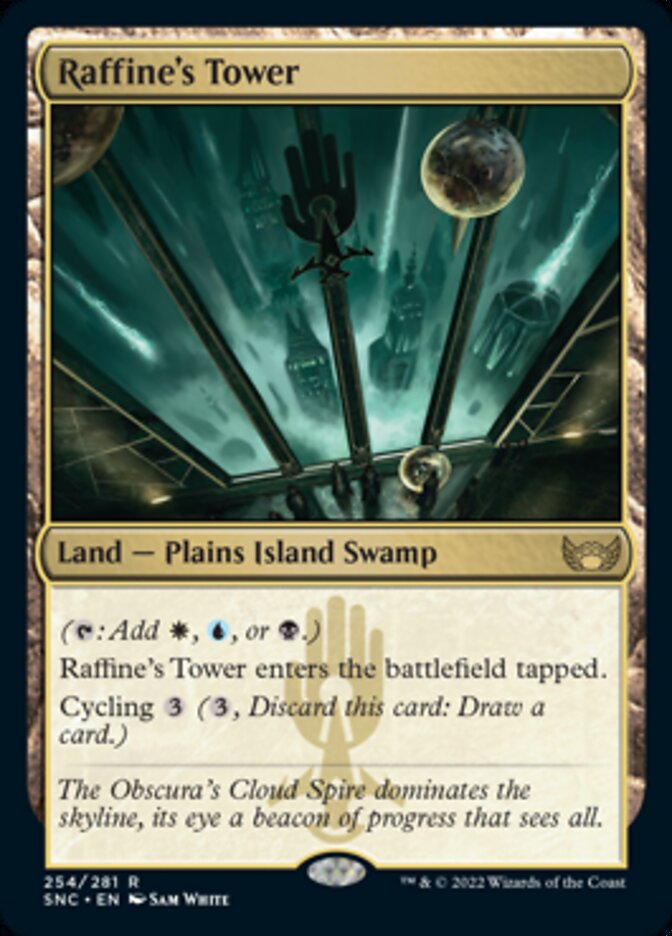

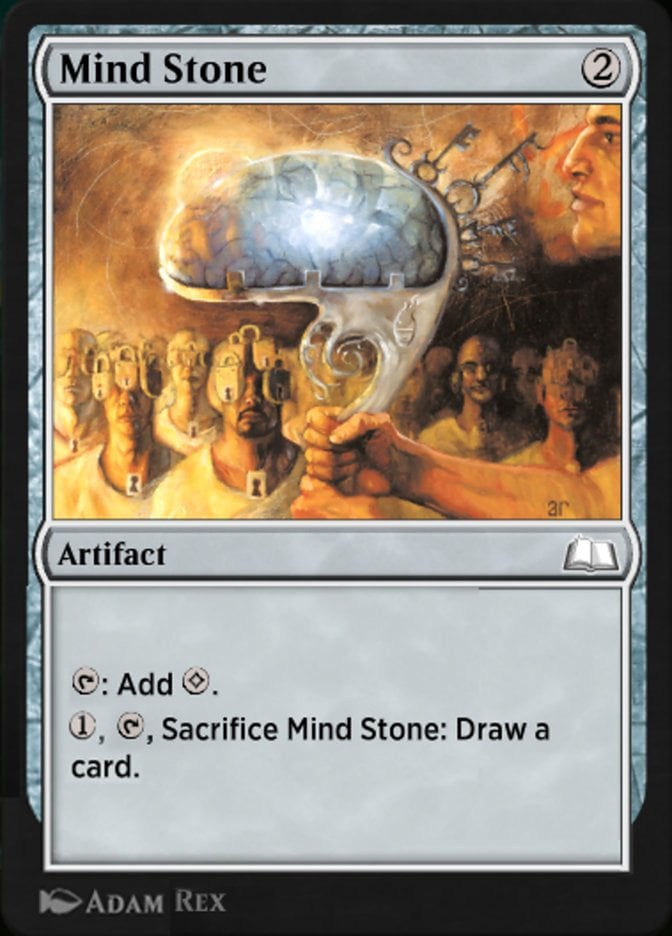
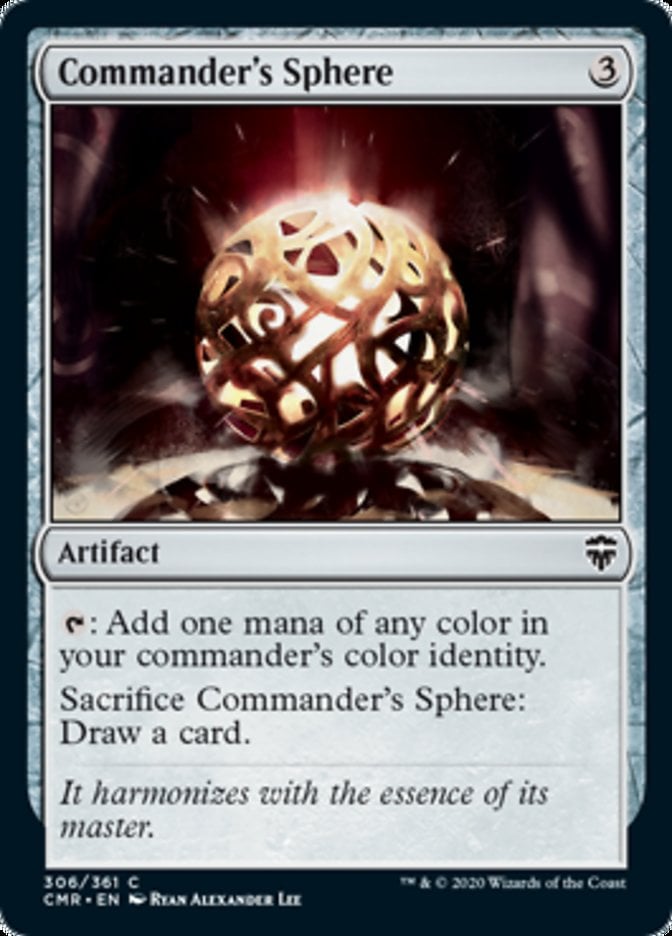



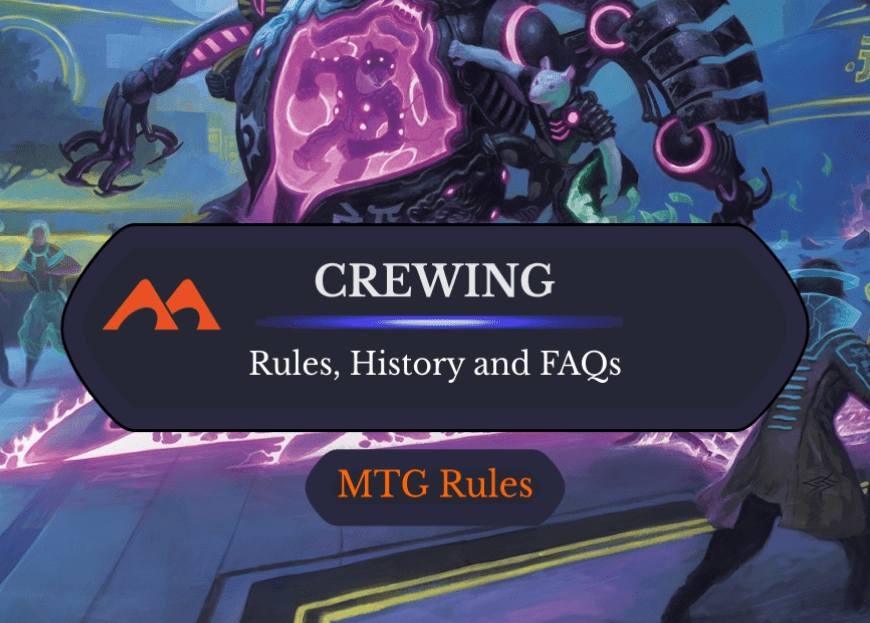
1 Comment
I believe you have a small mistake in how Valakut Exploration works. It deals damage equal the number of cards exiled by it and not played that turn, not the mana value of cards exiled and not played.
Add Comment